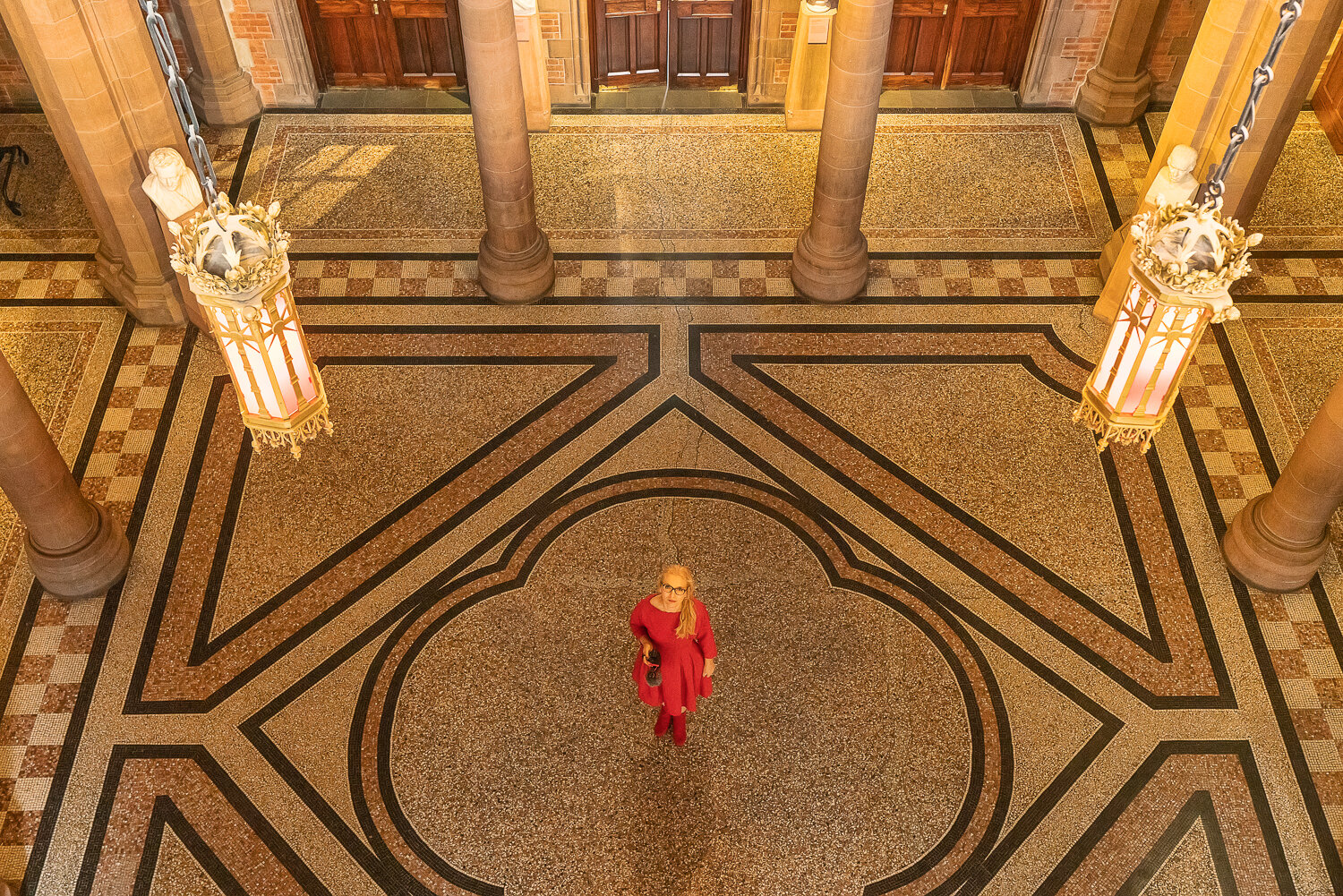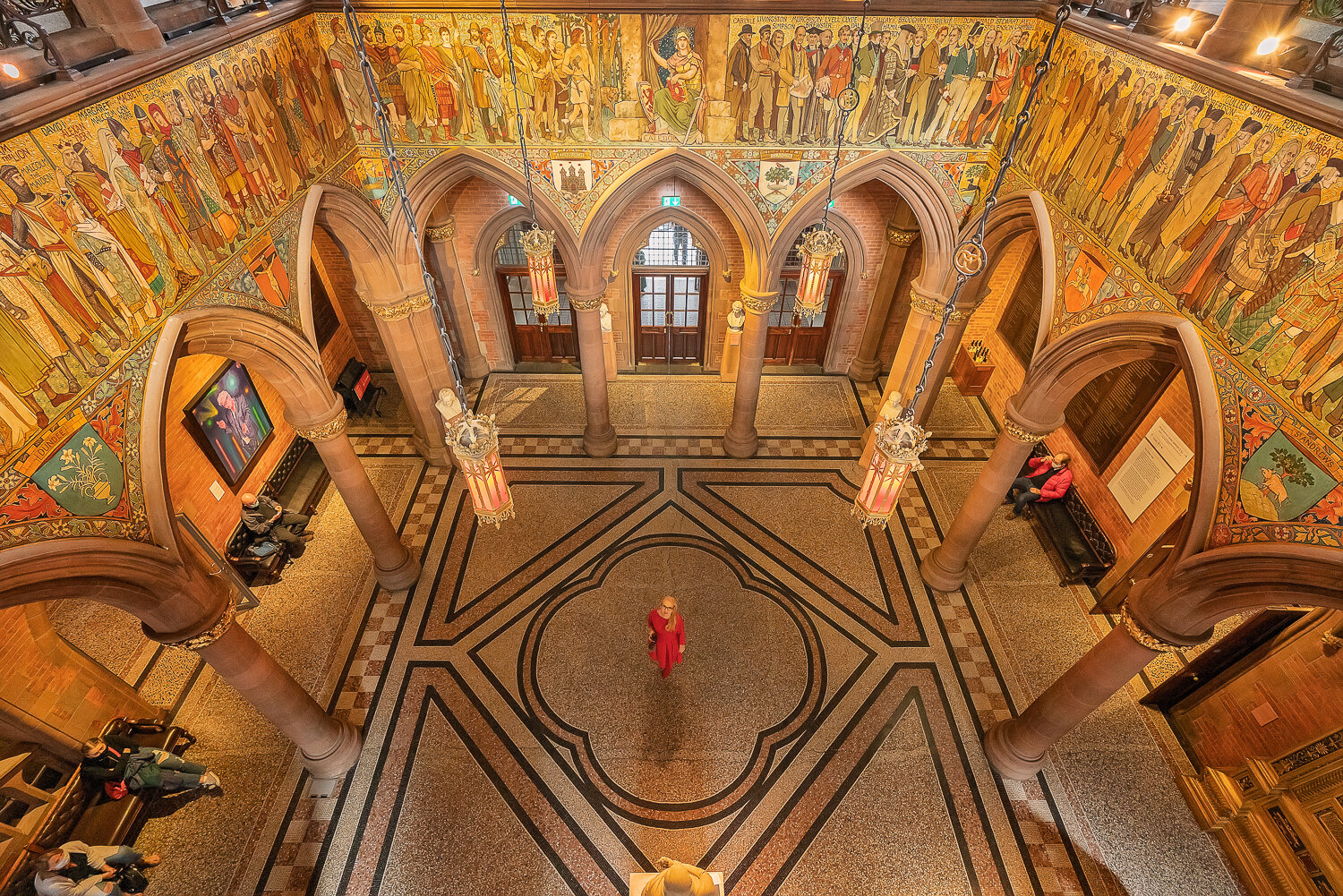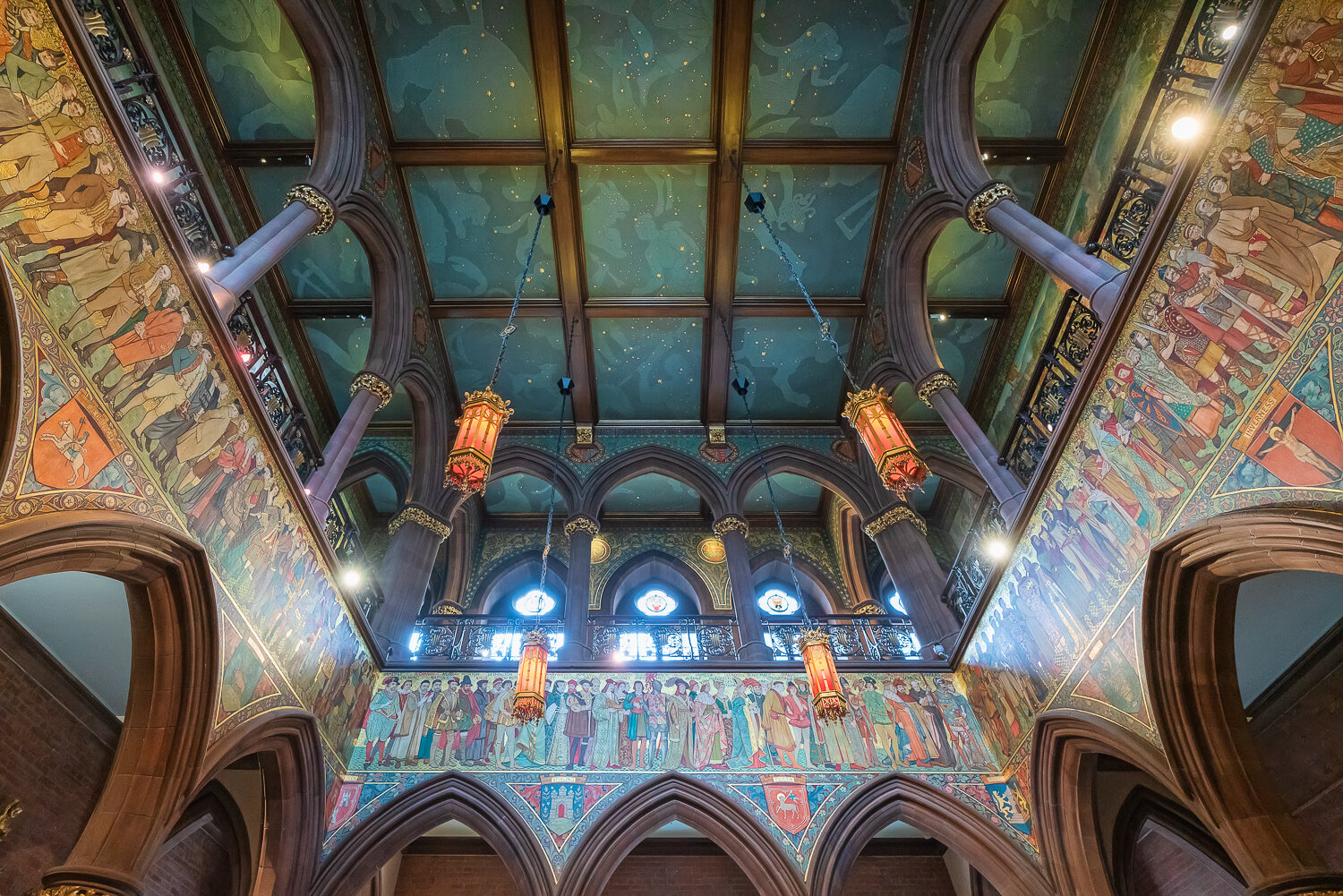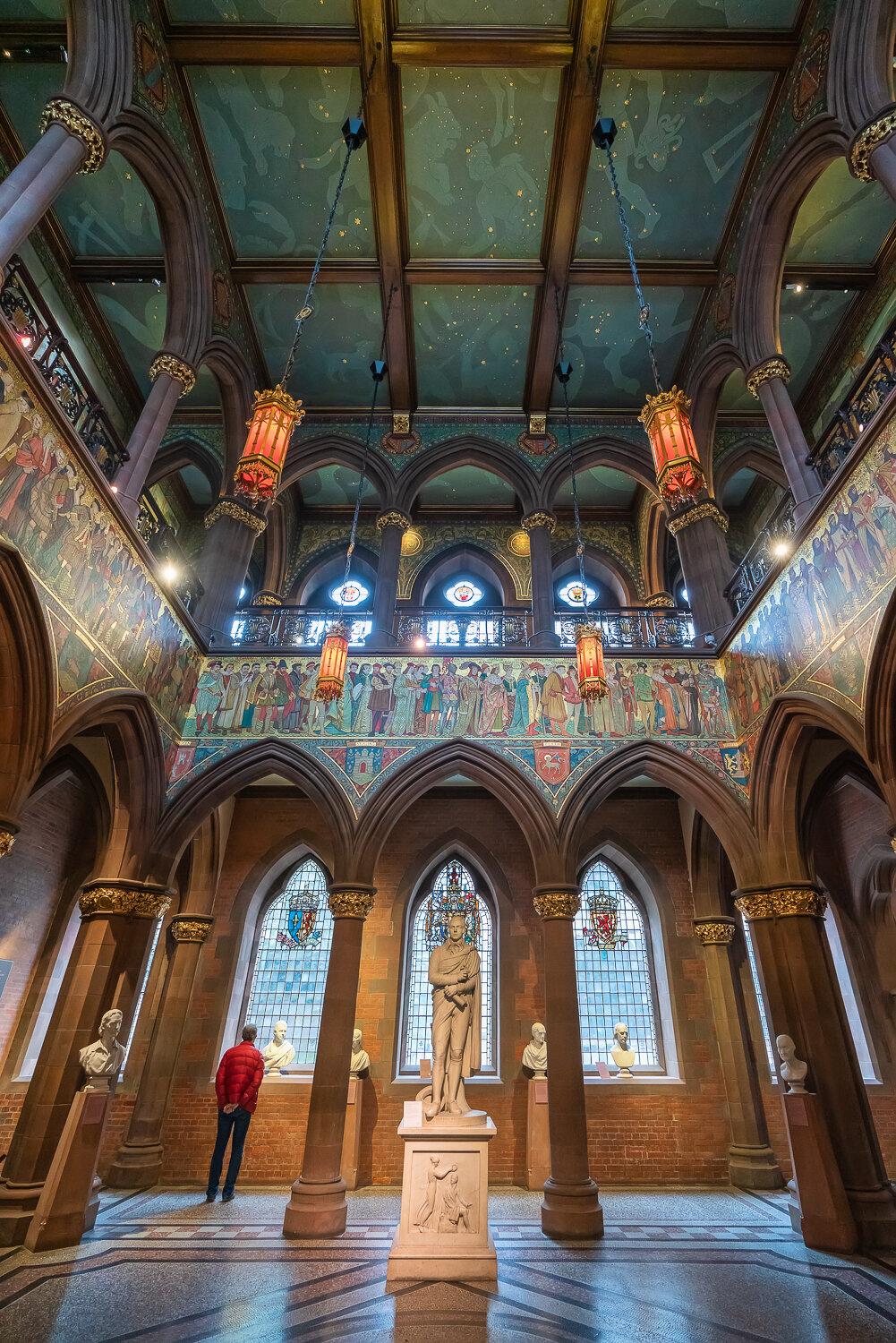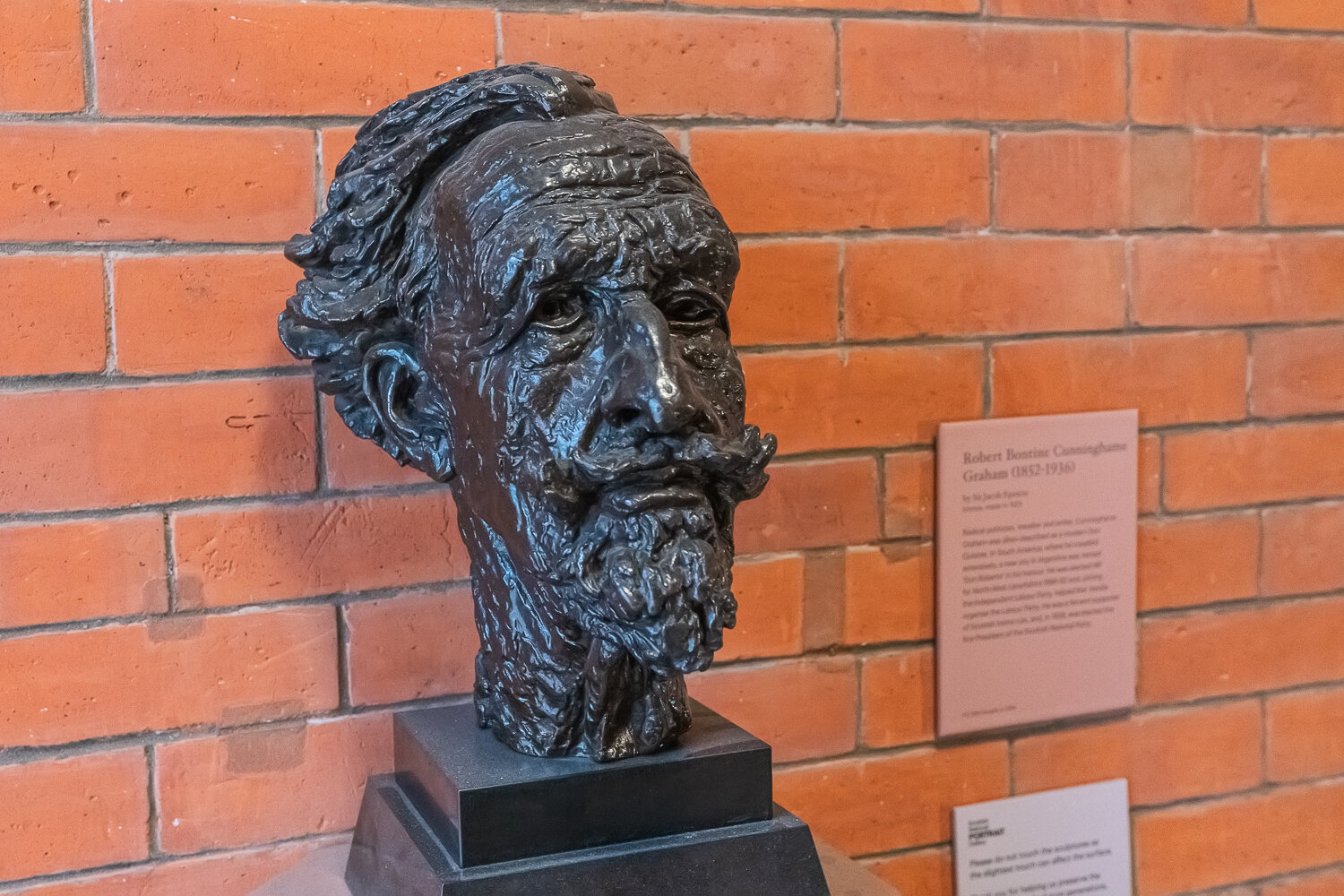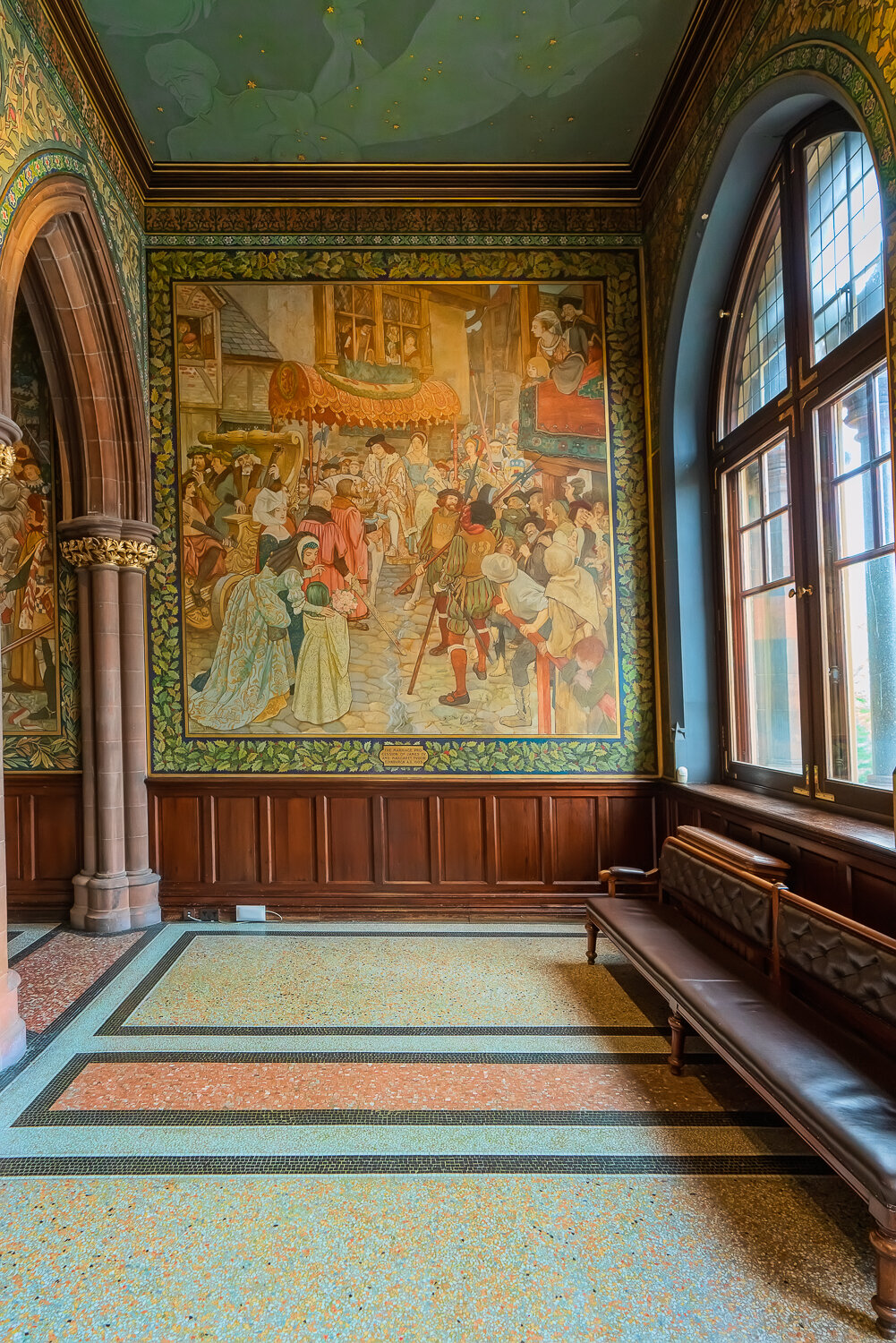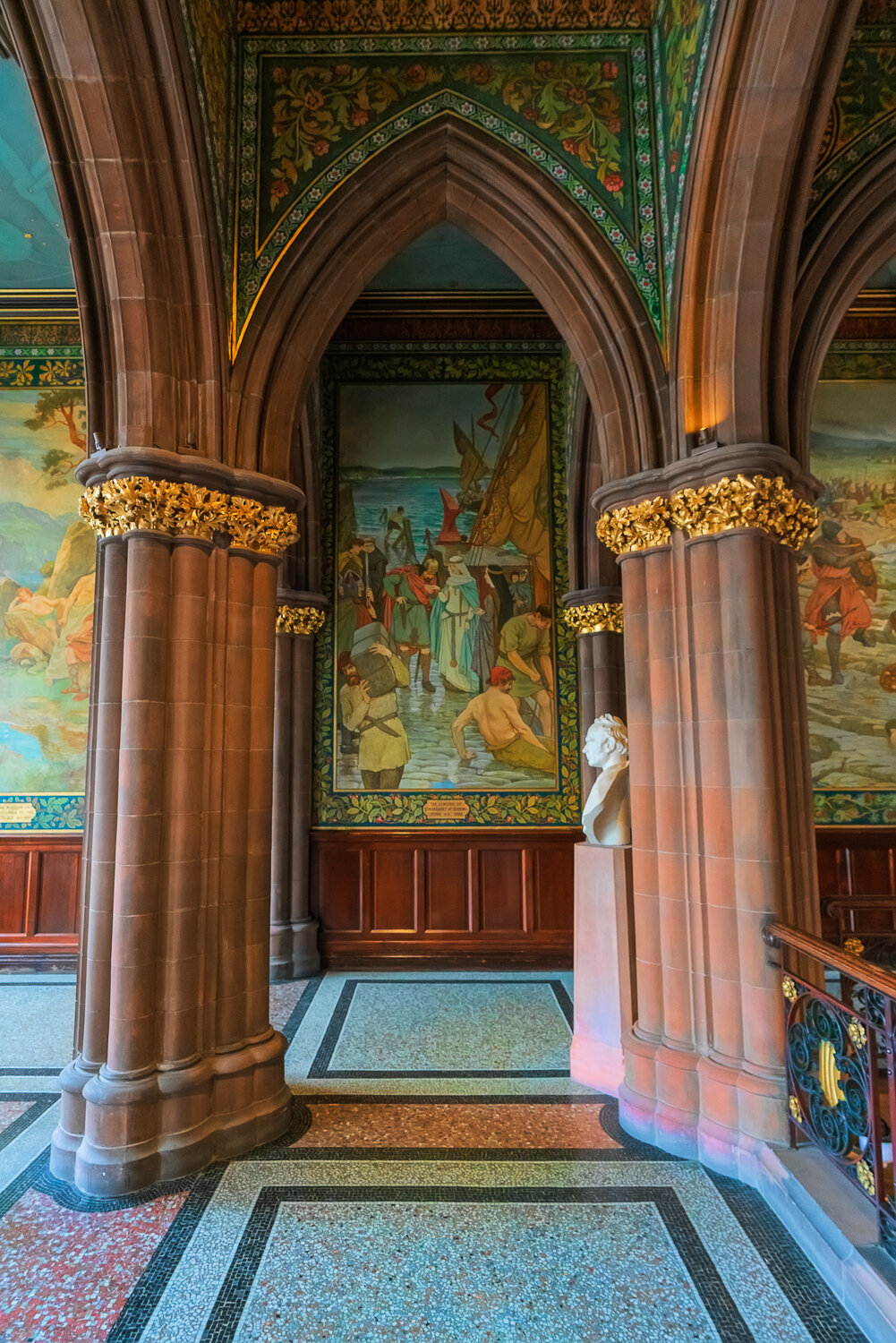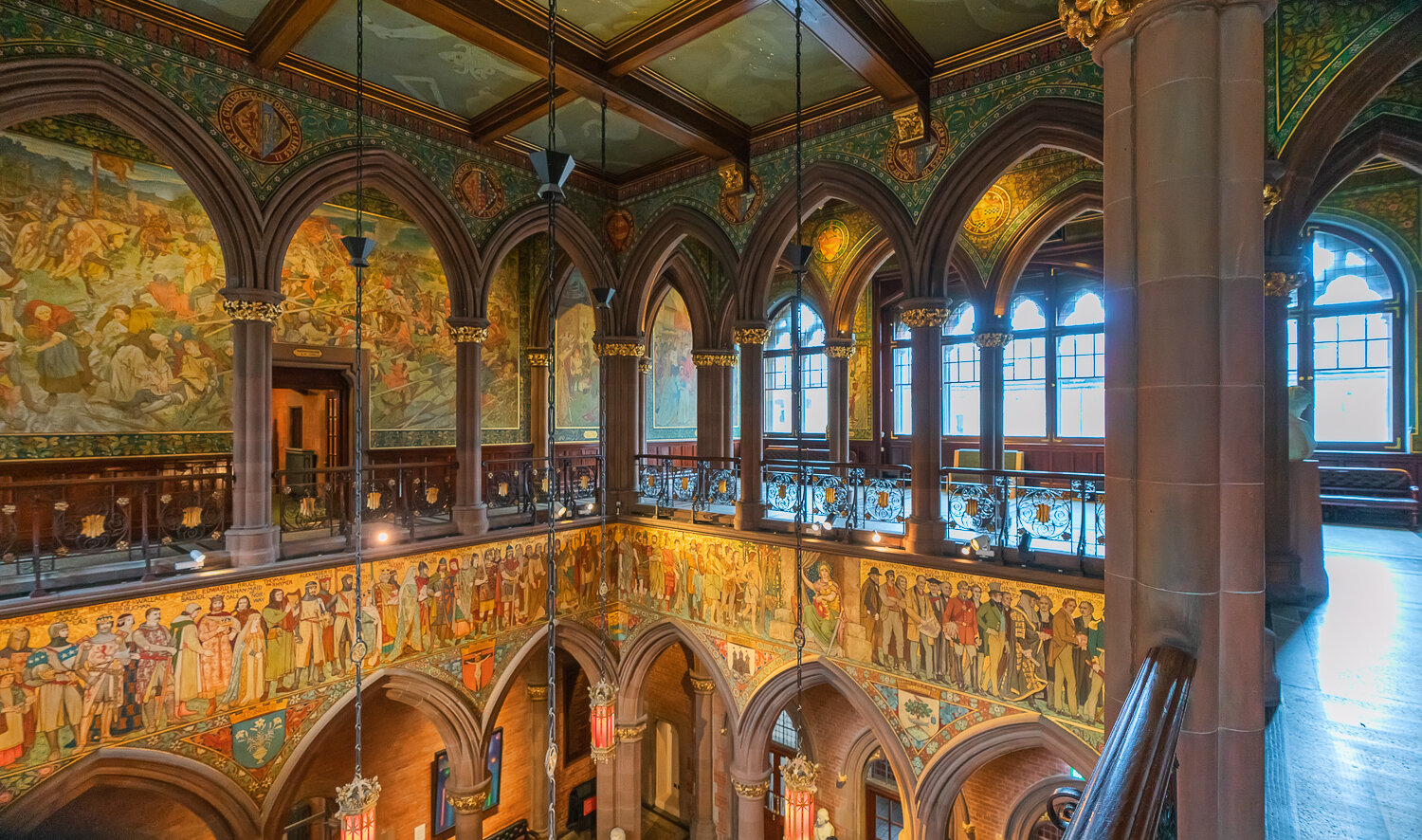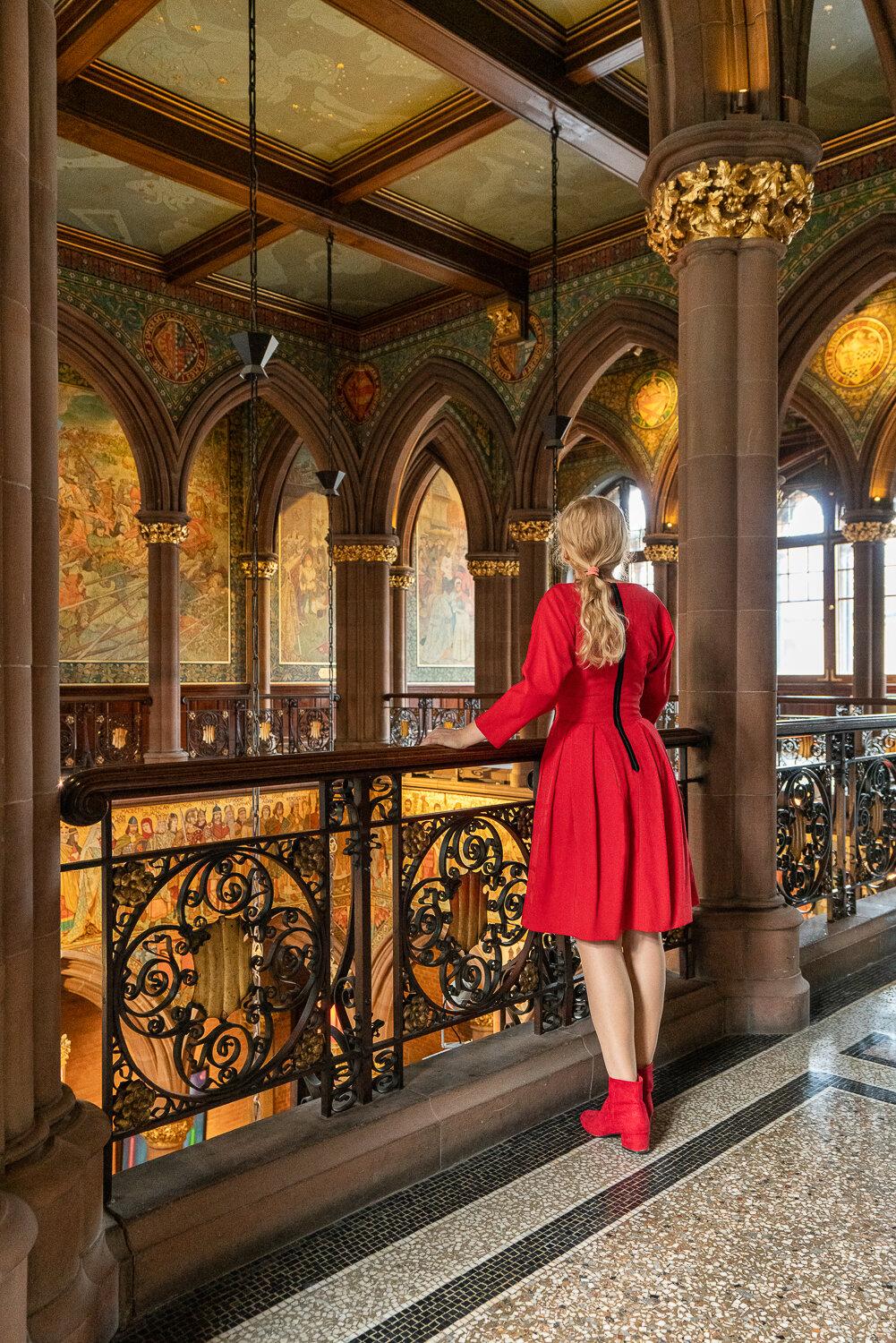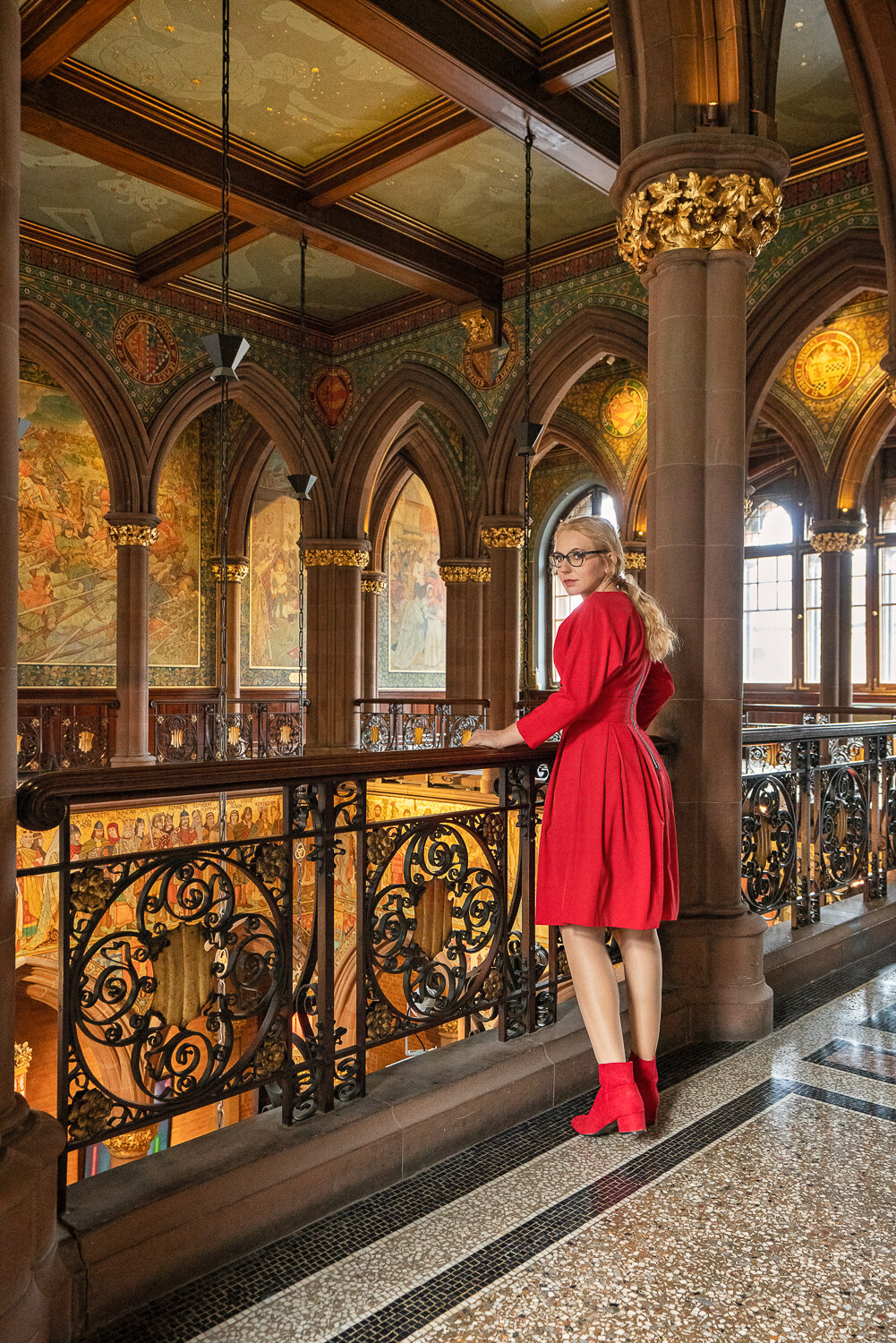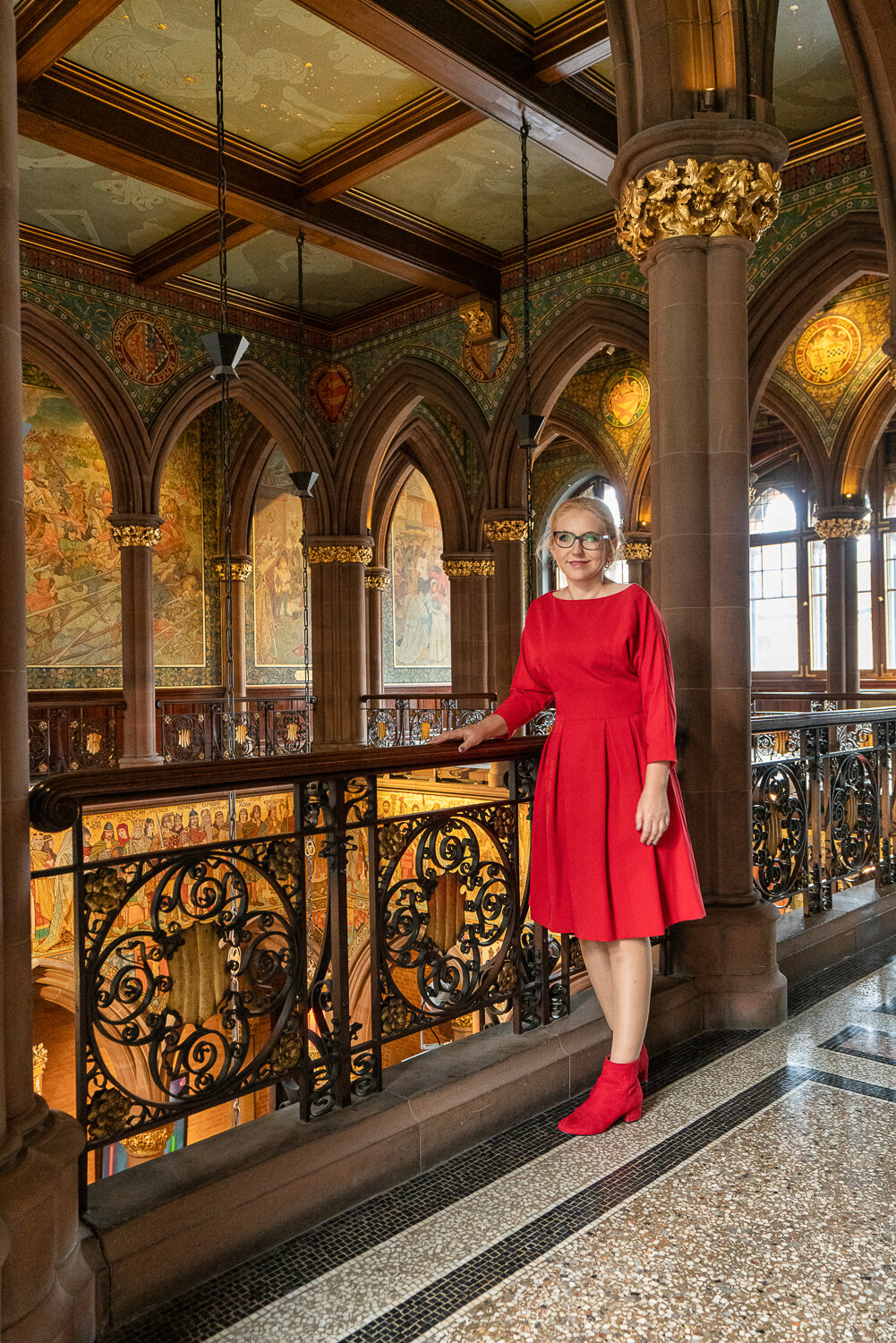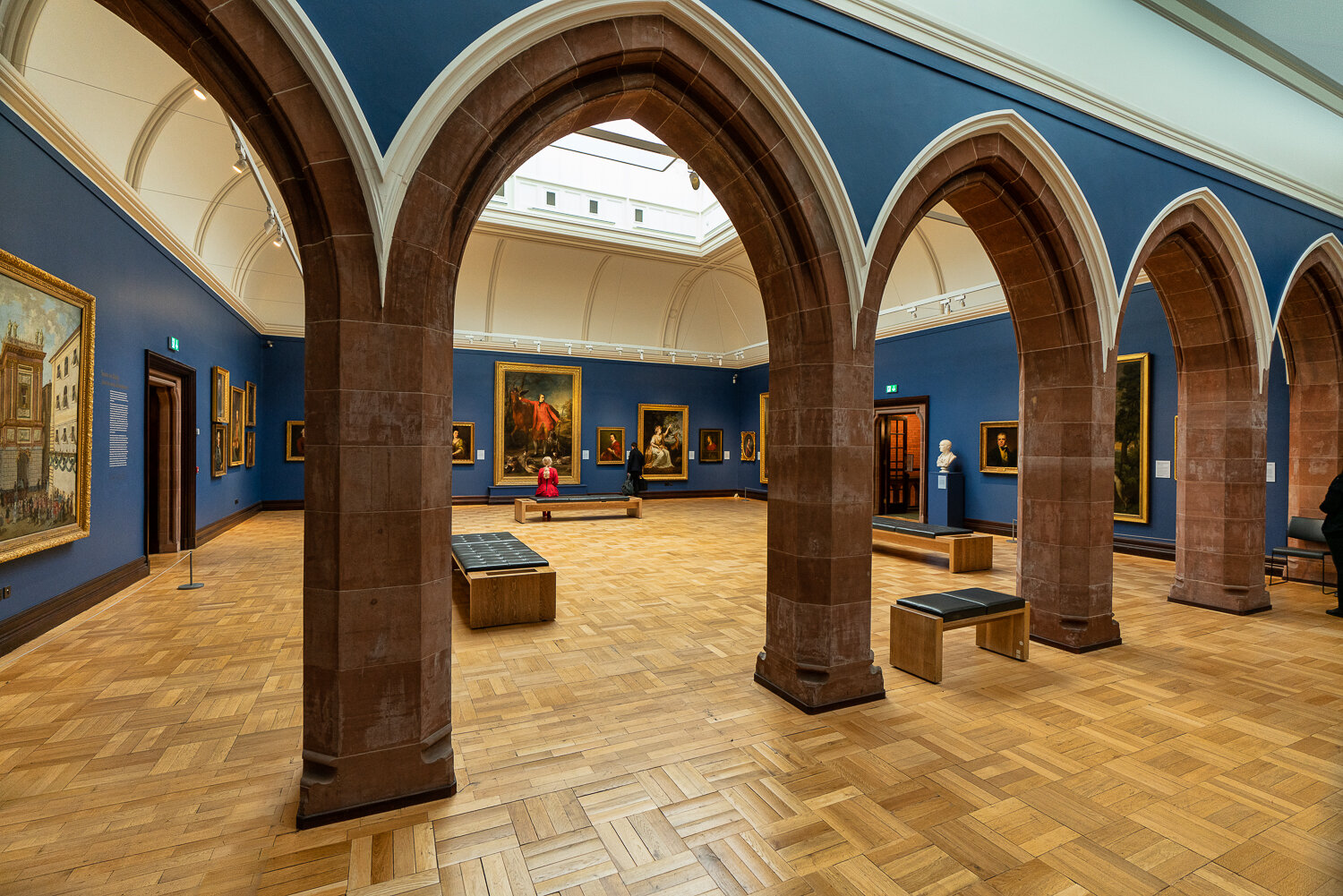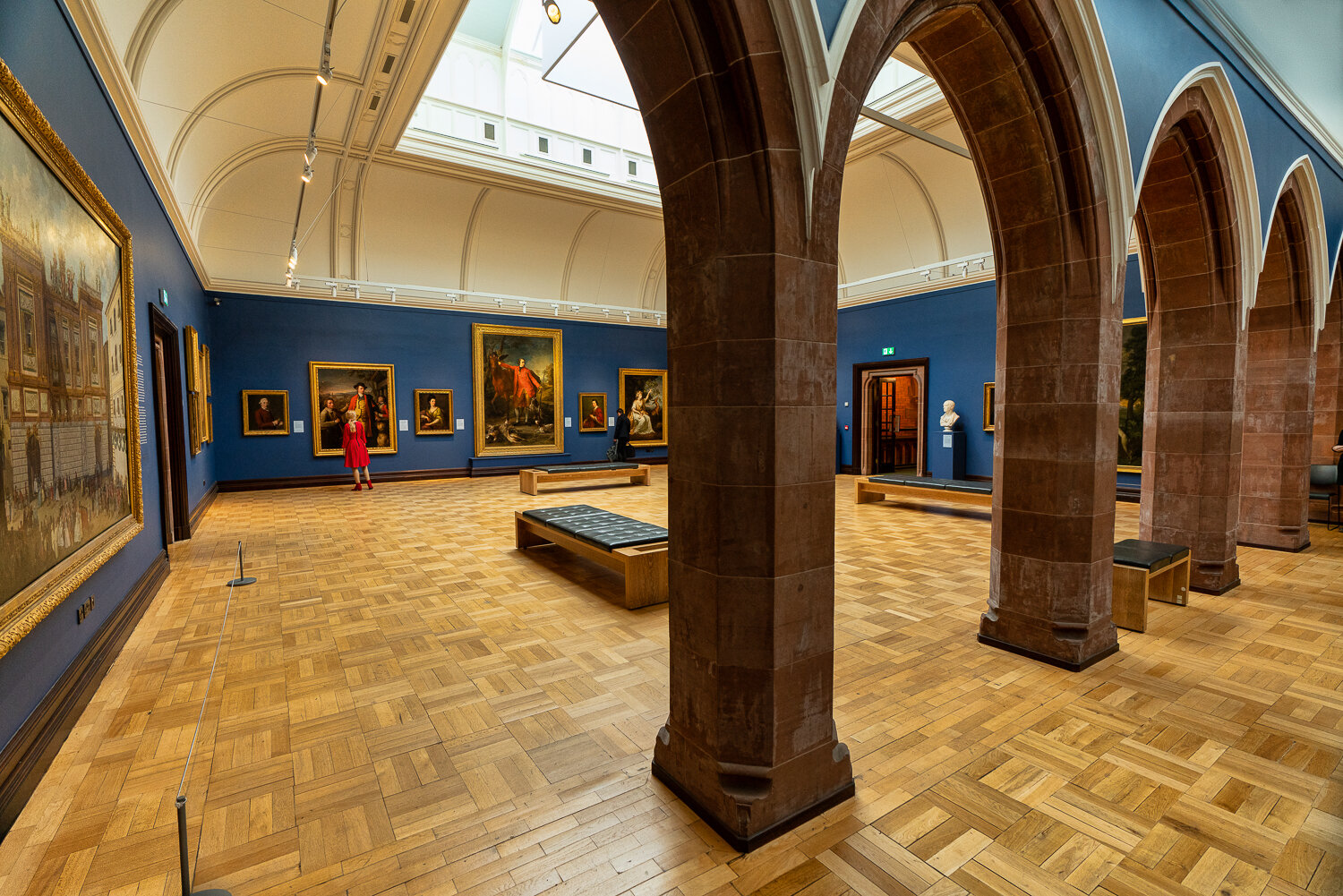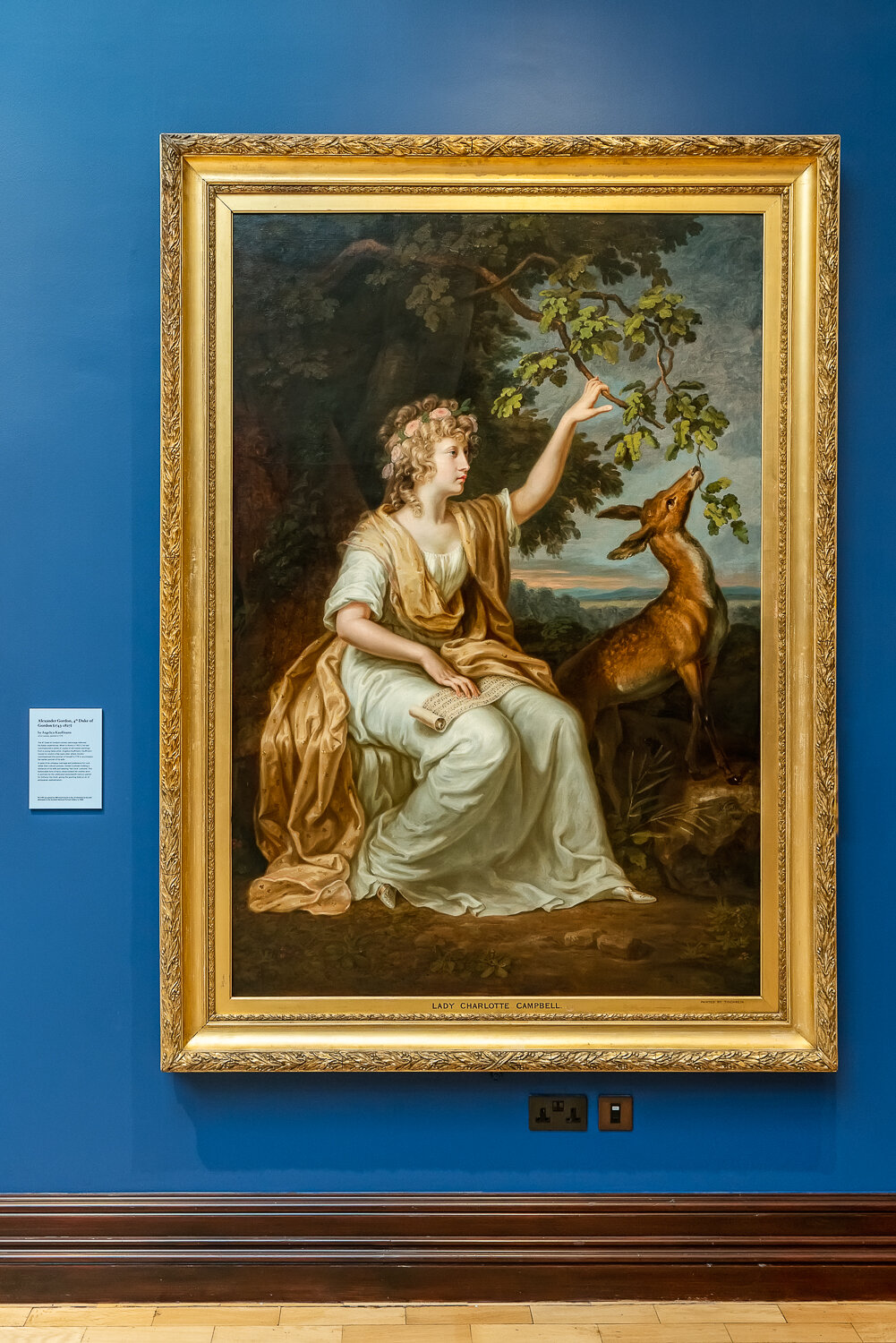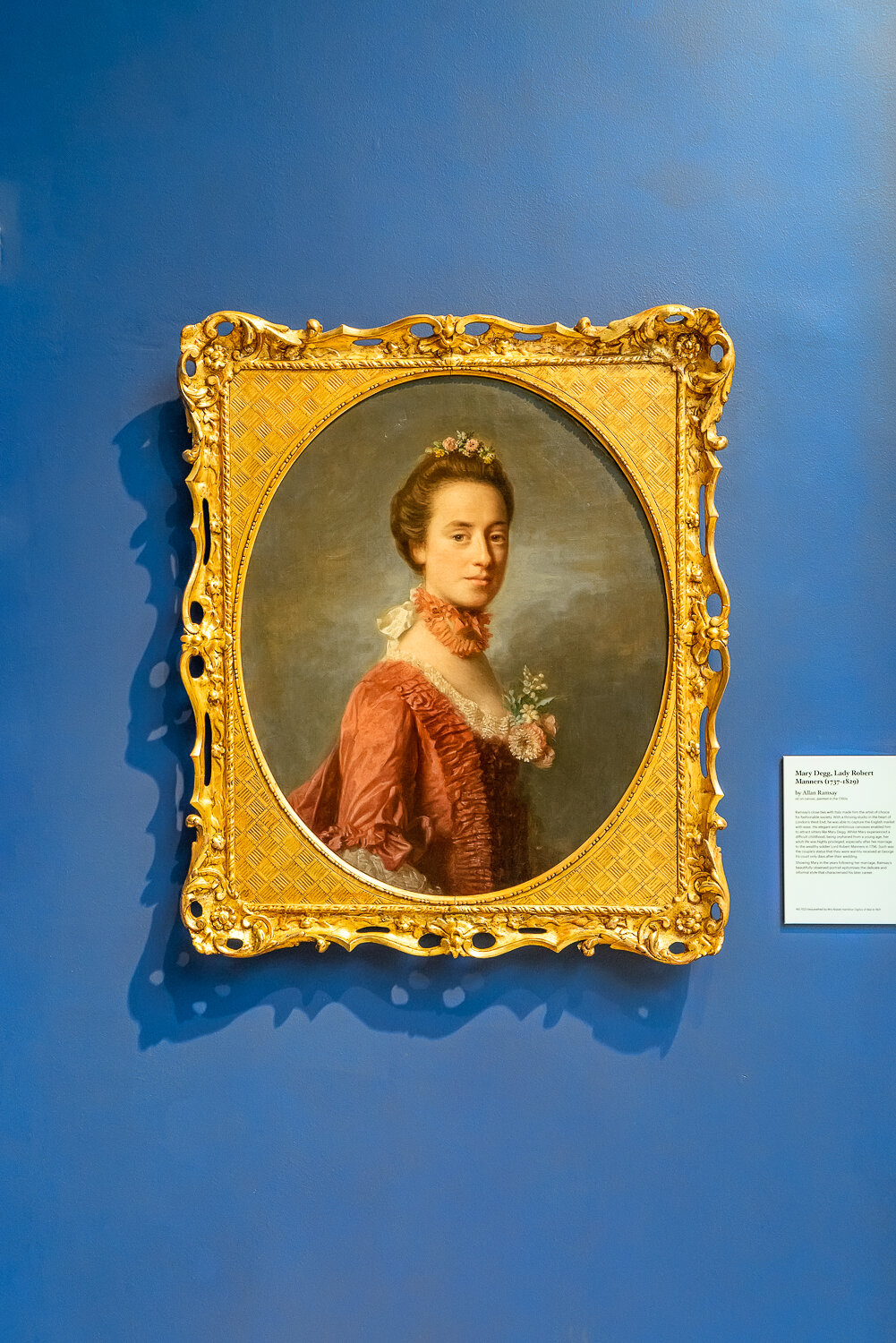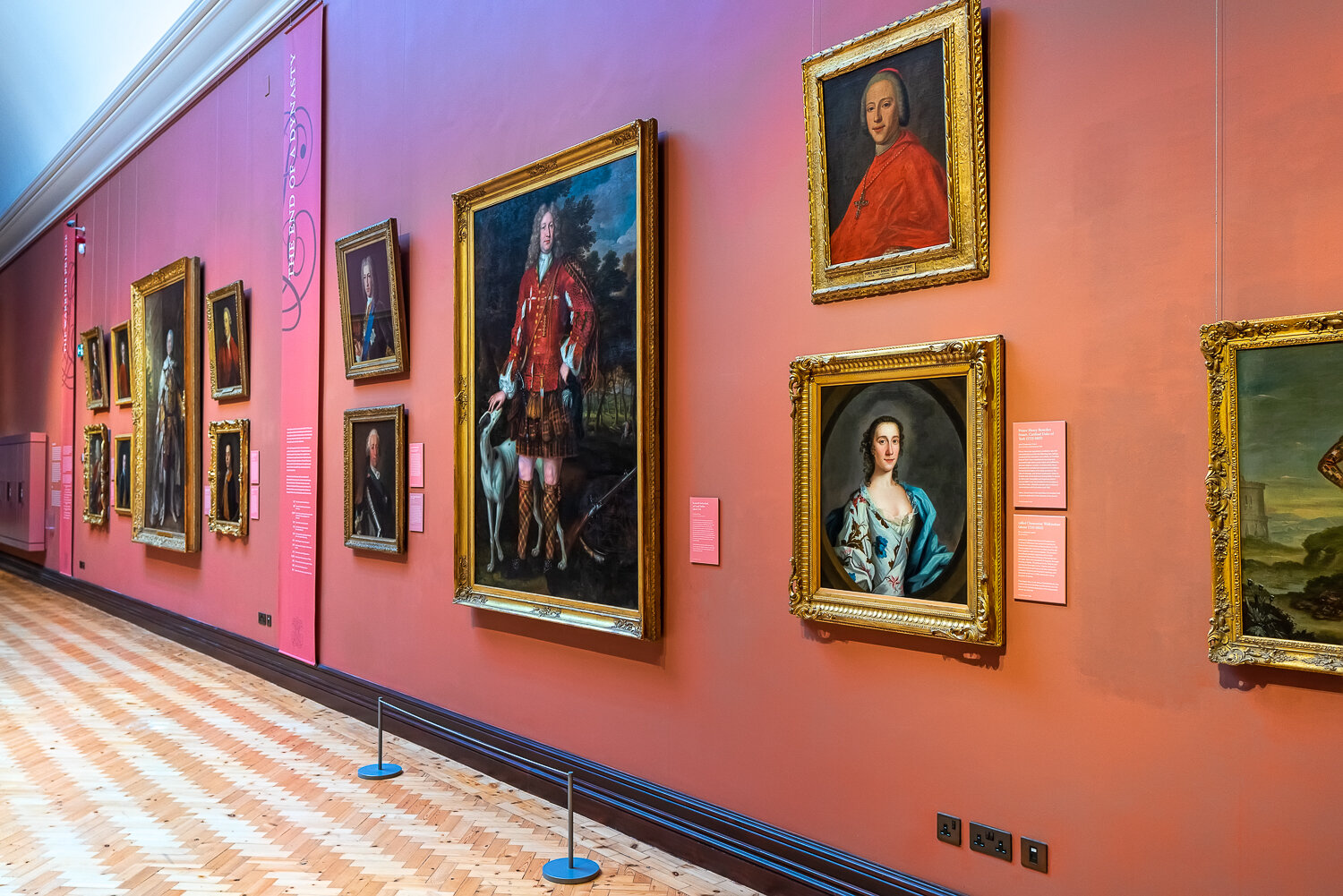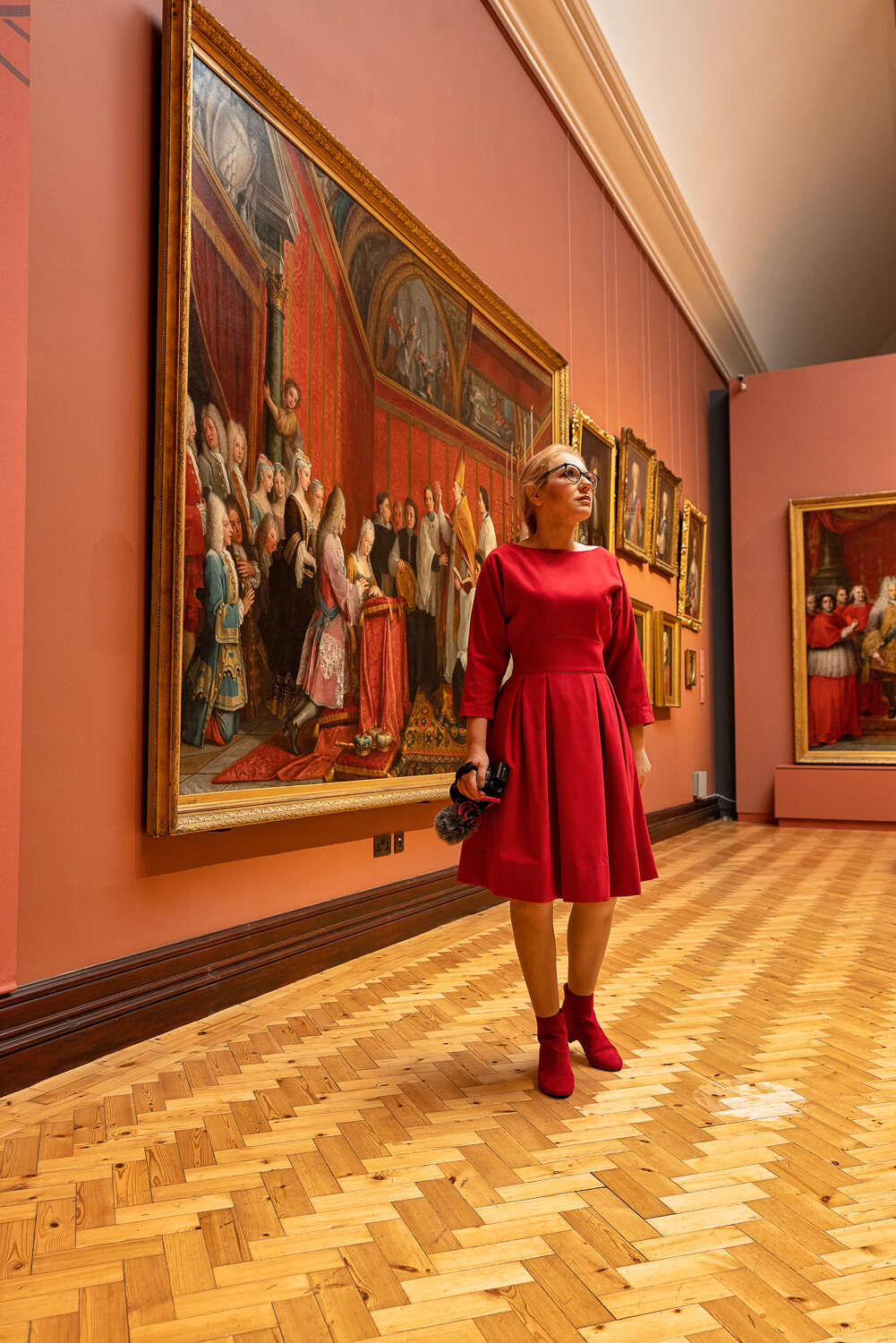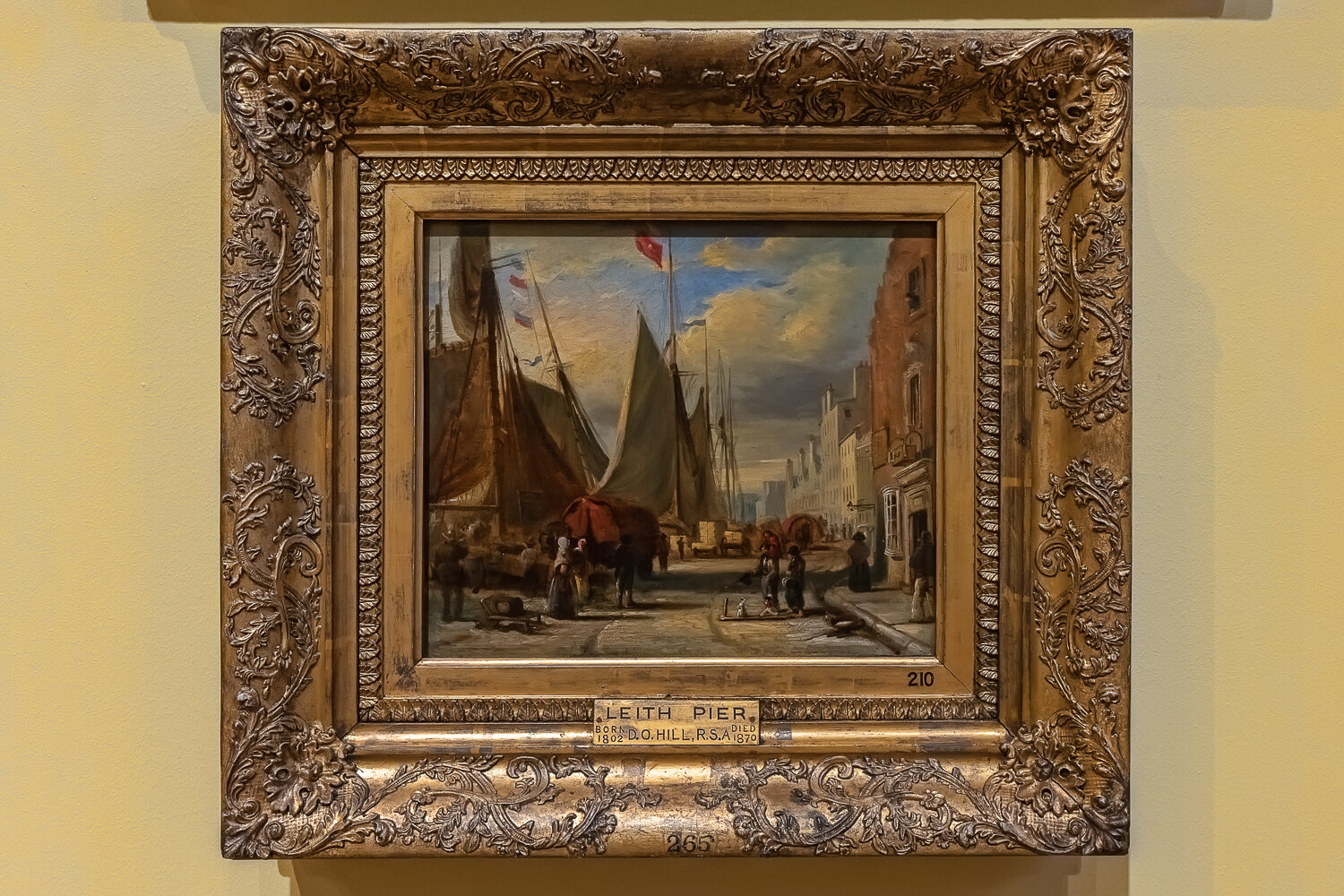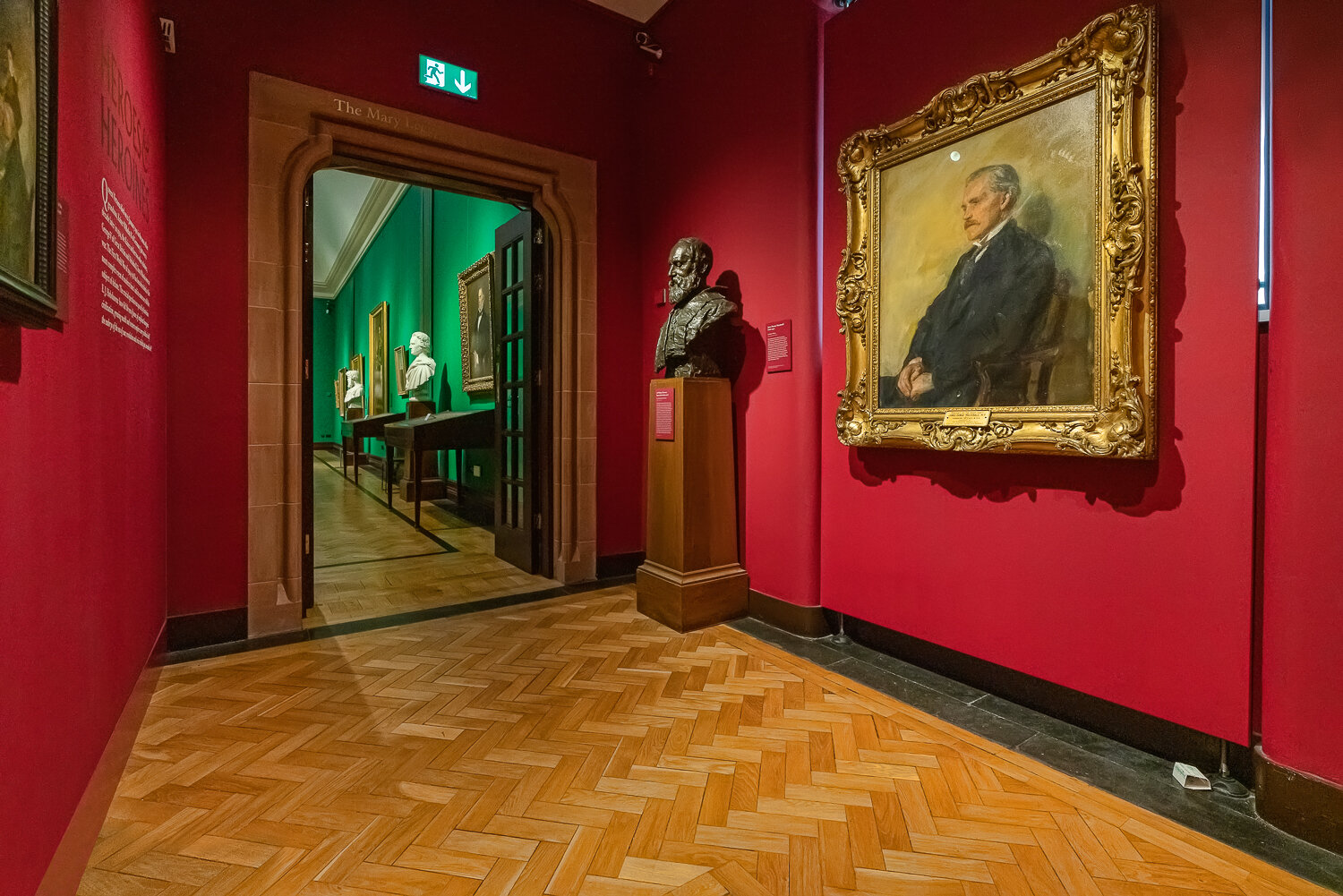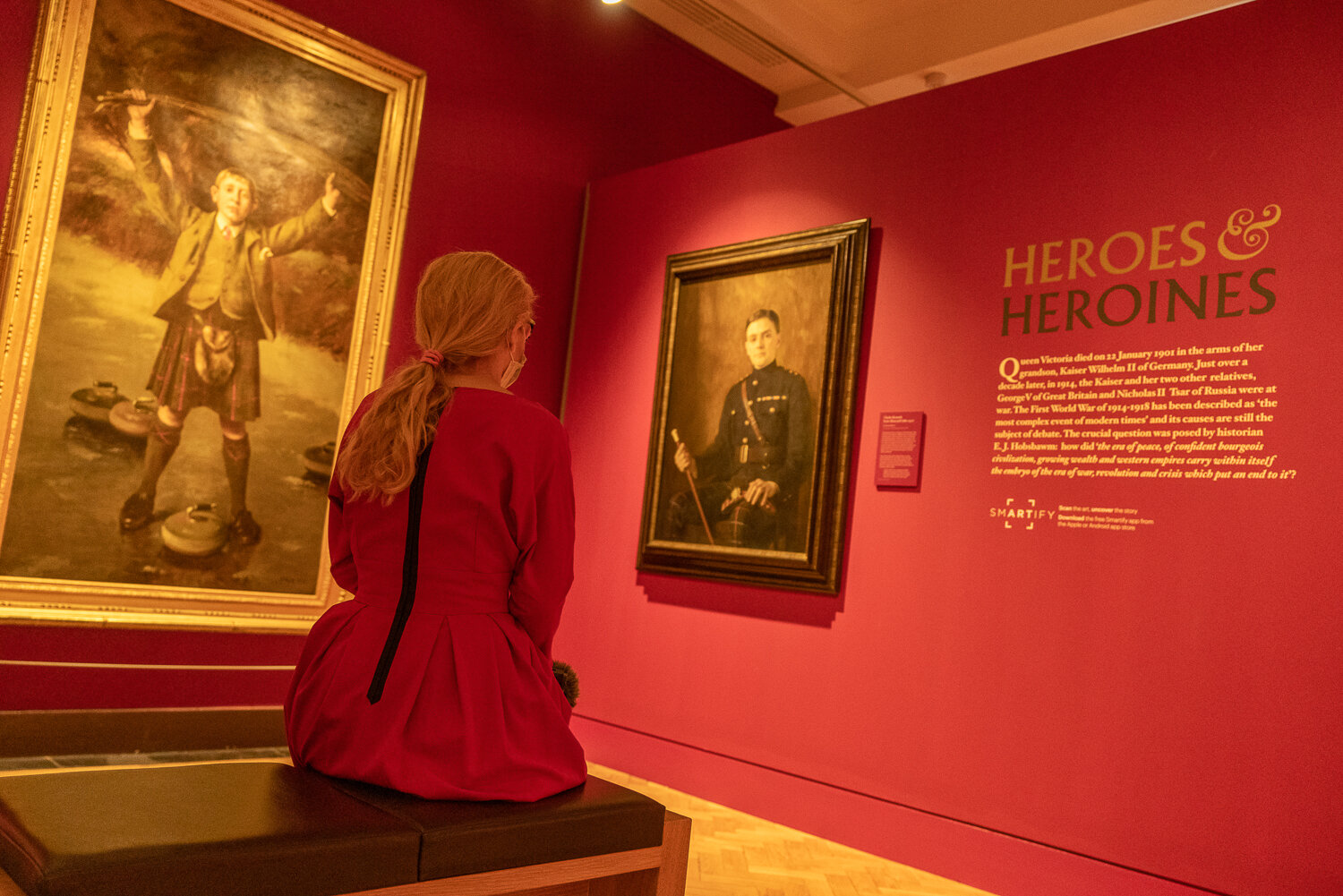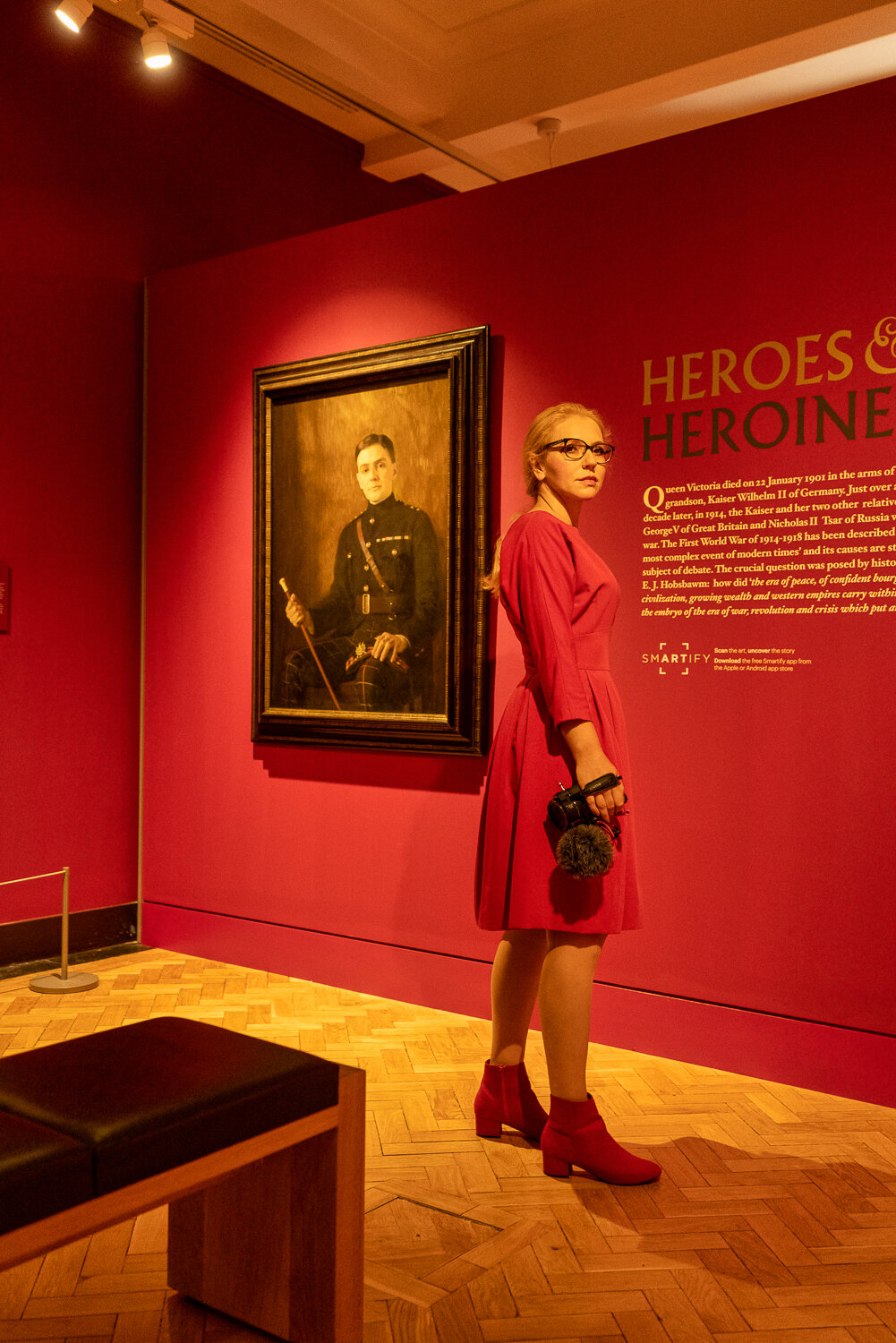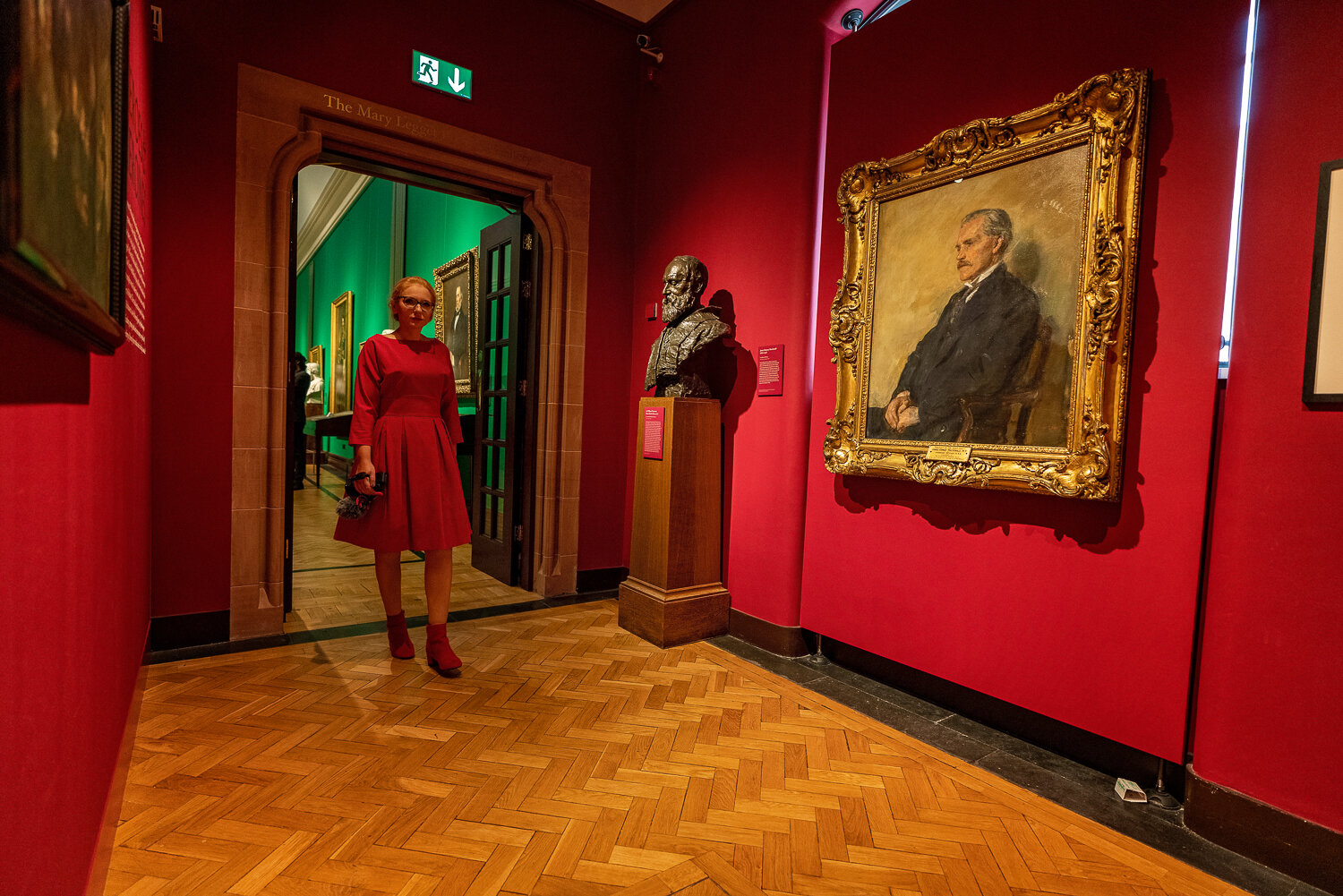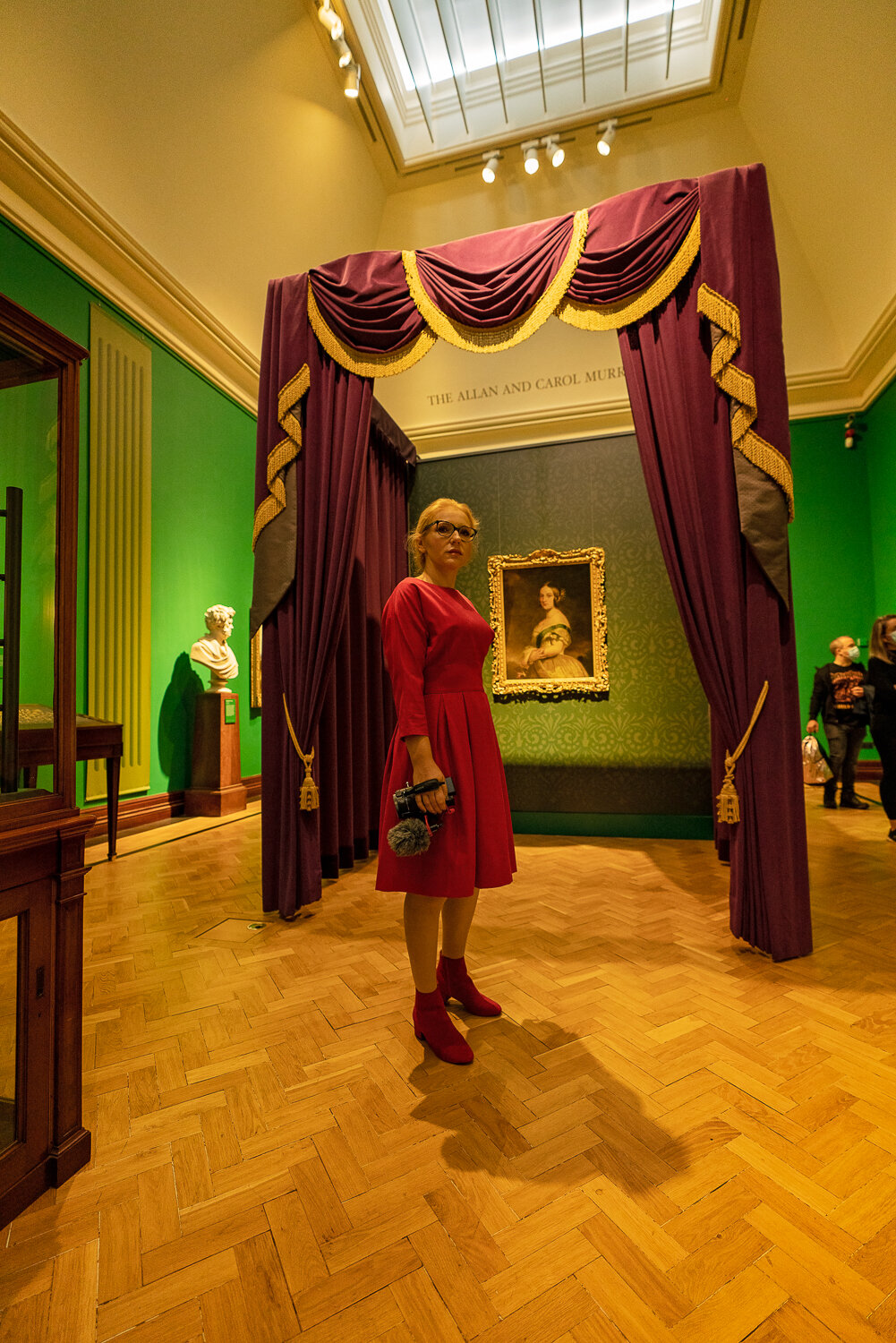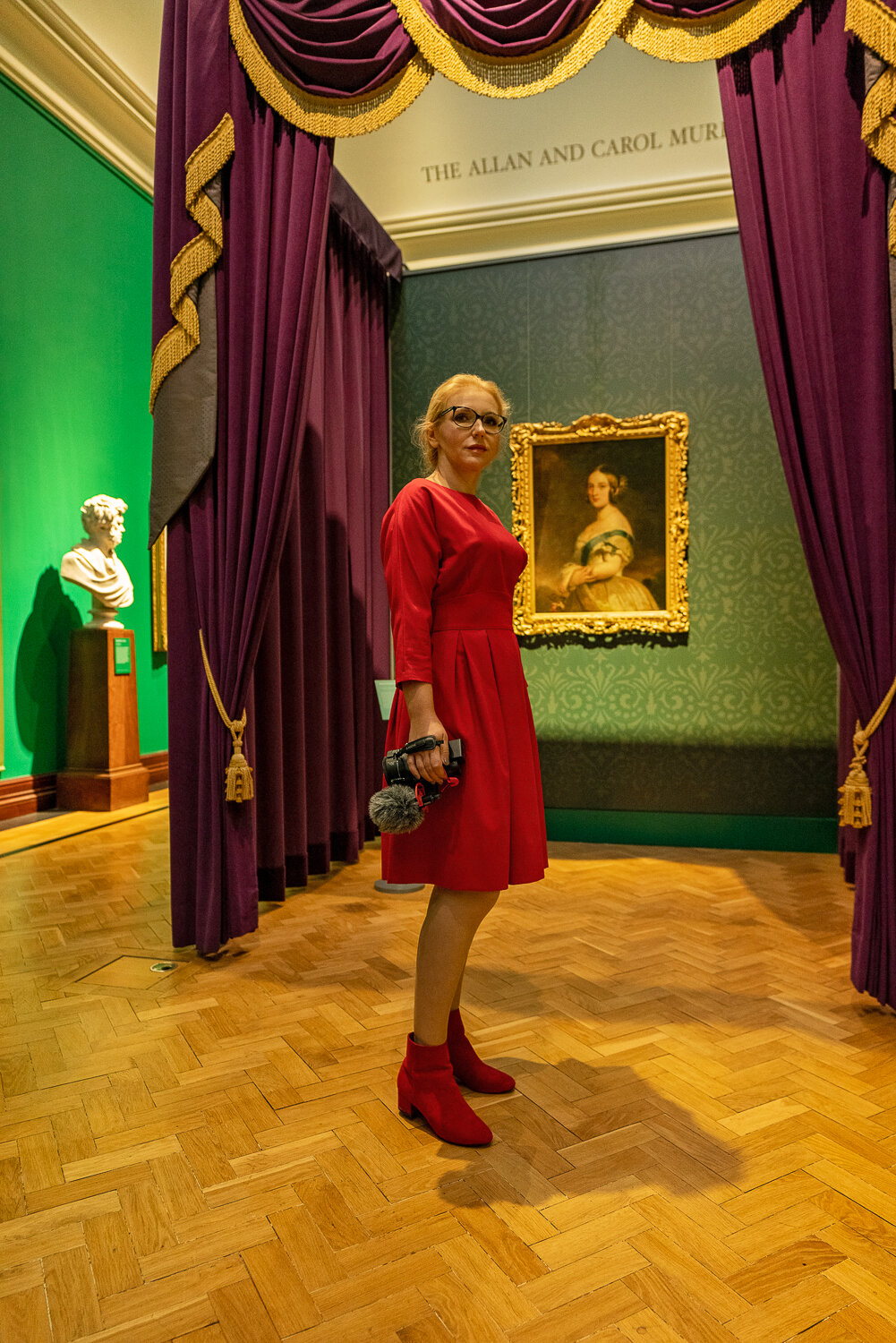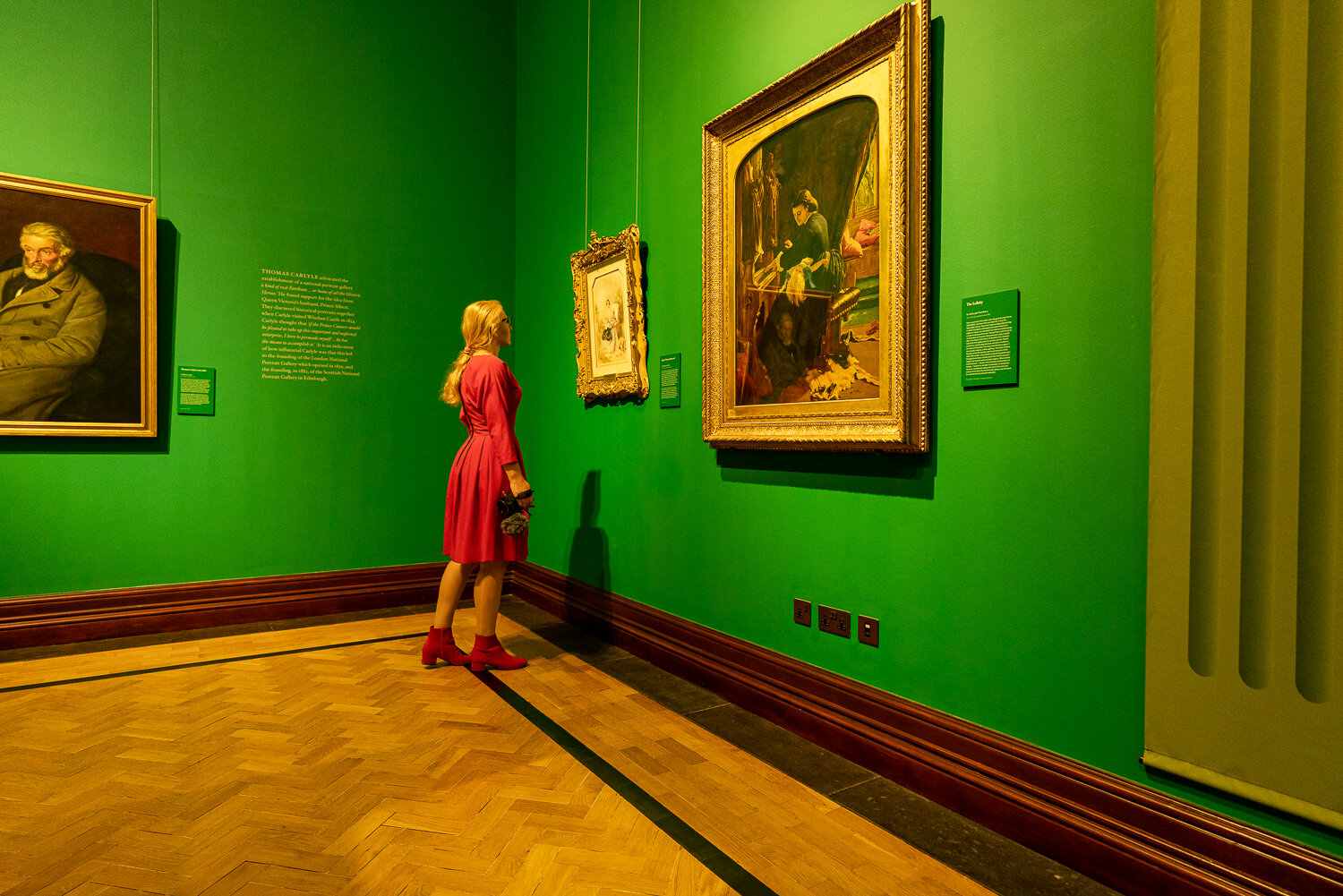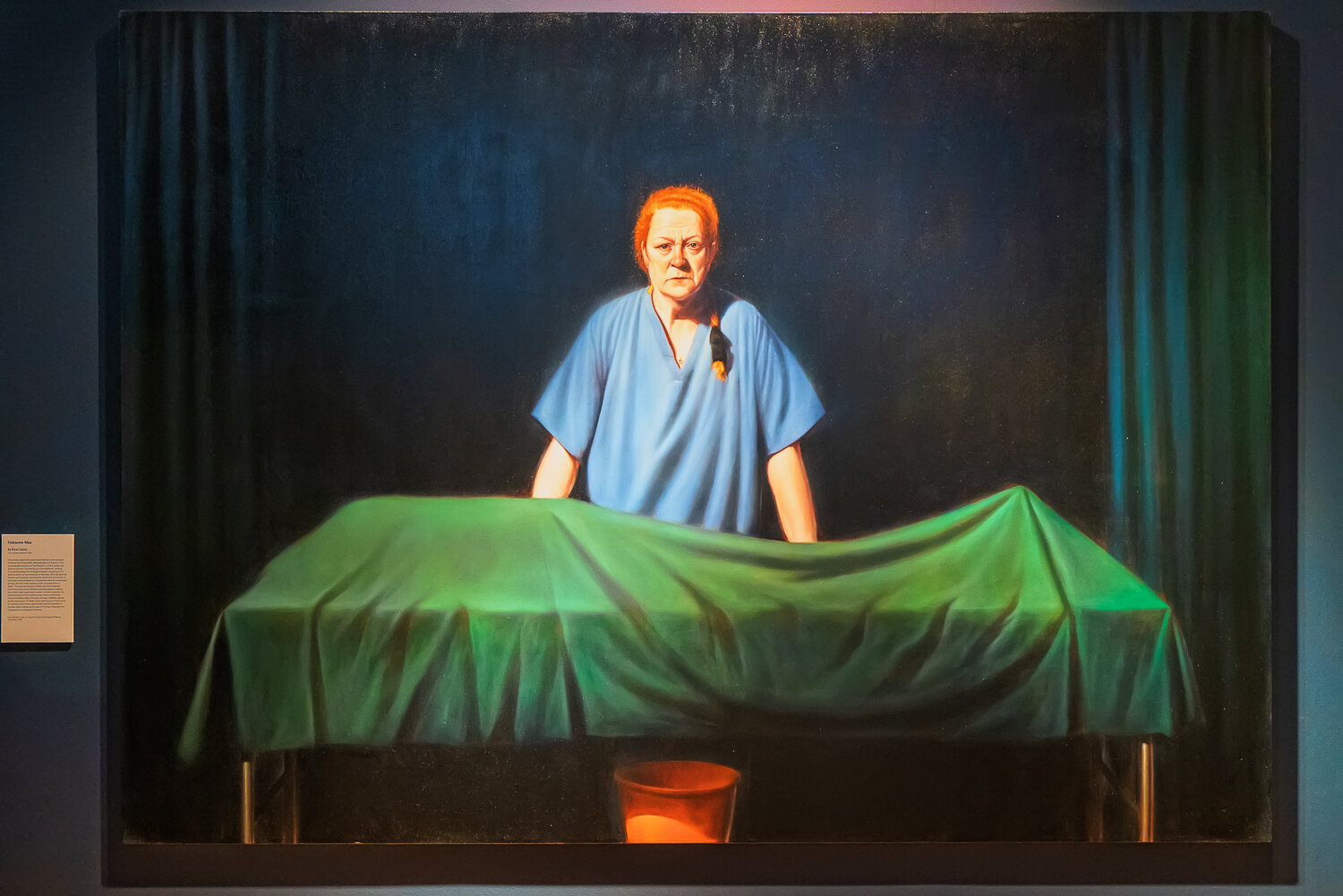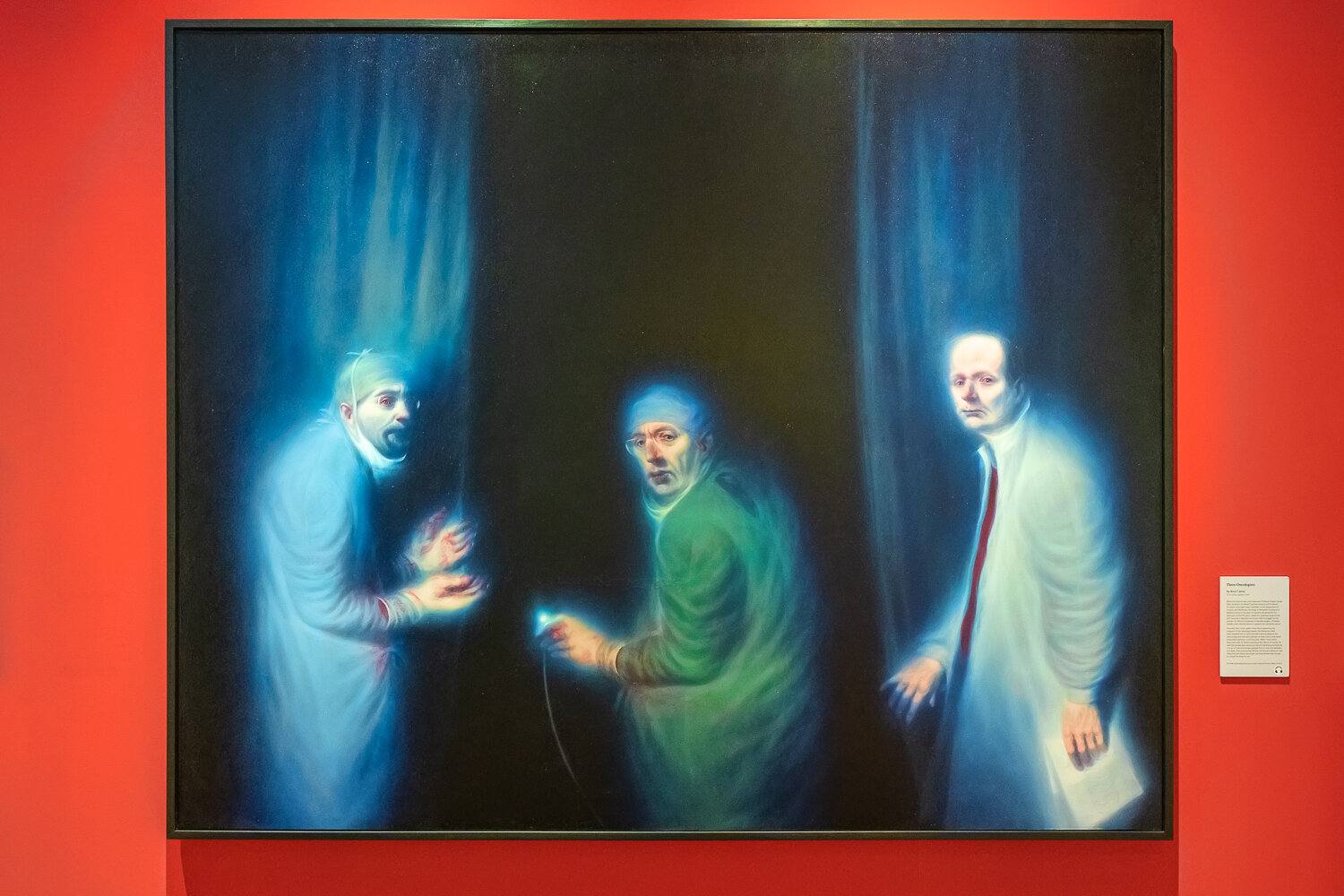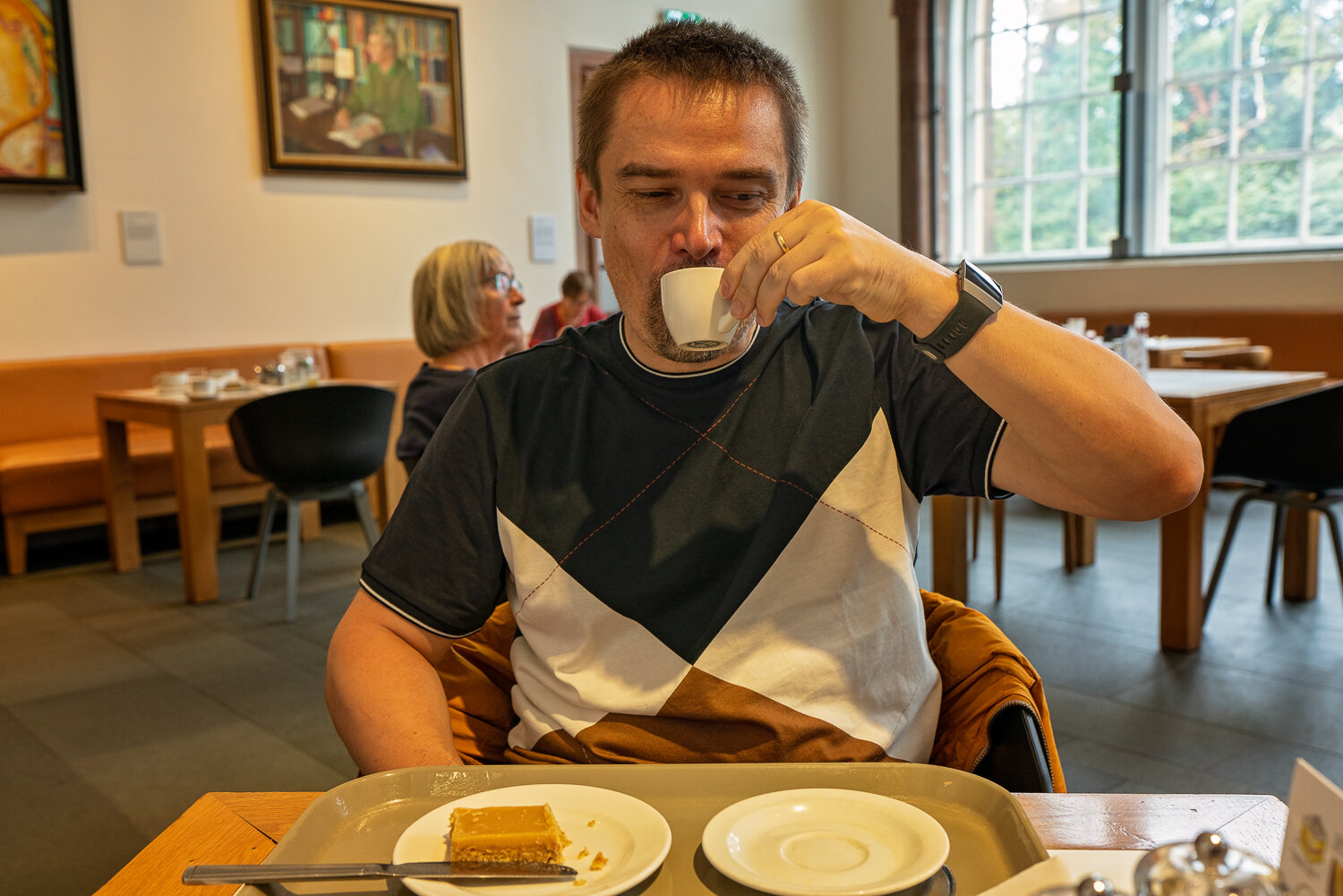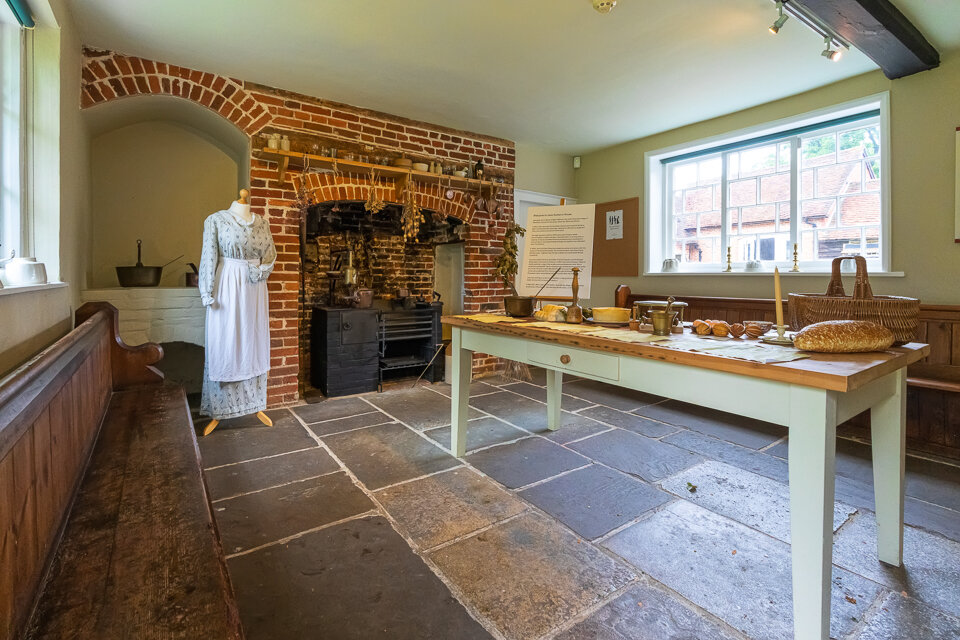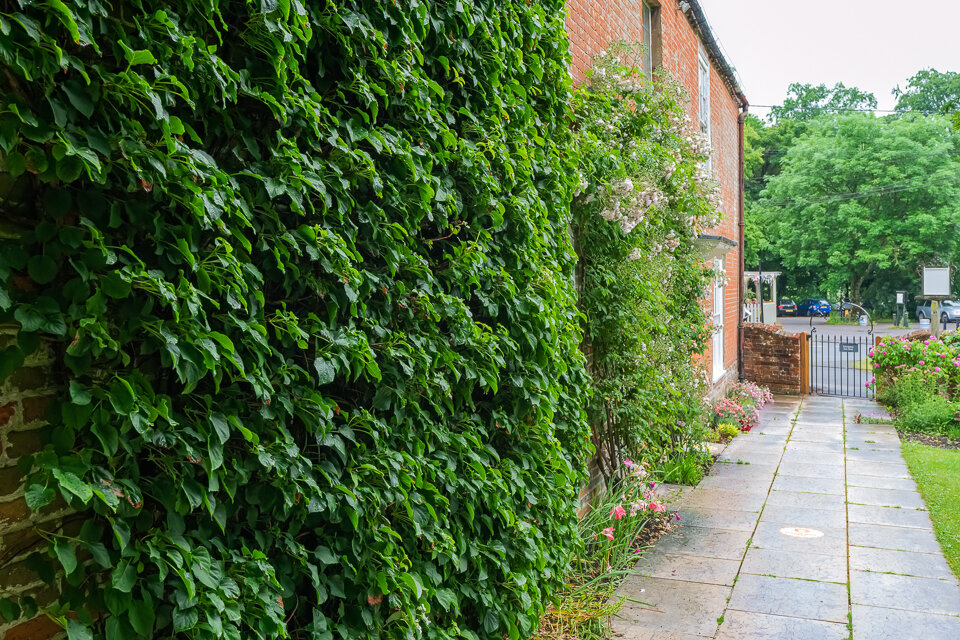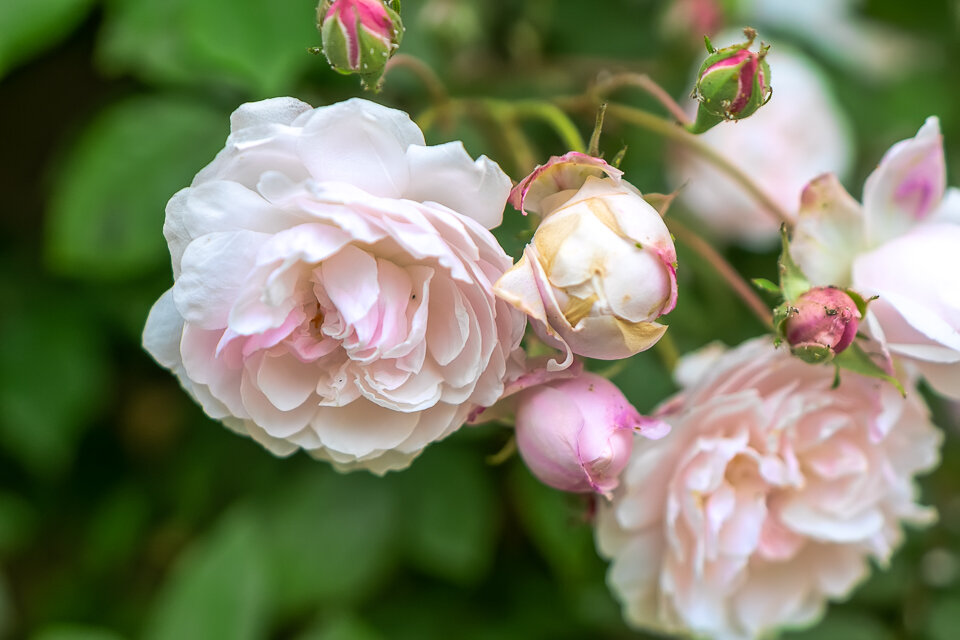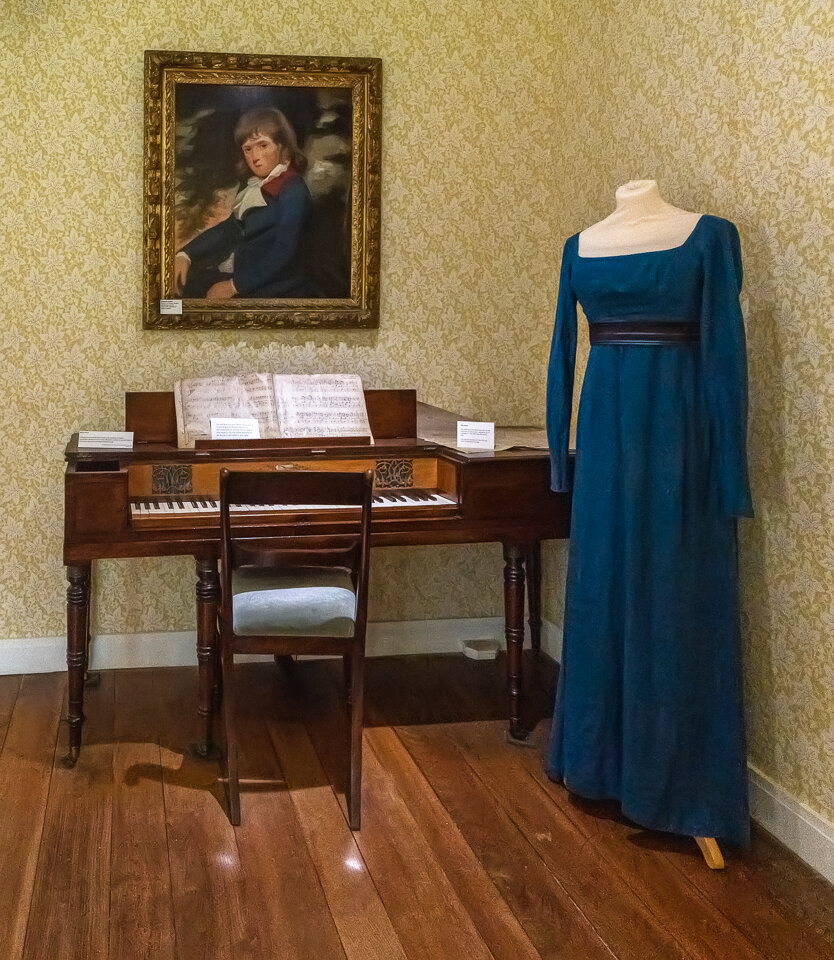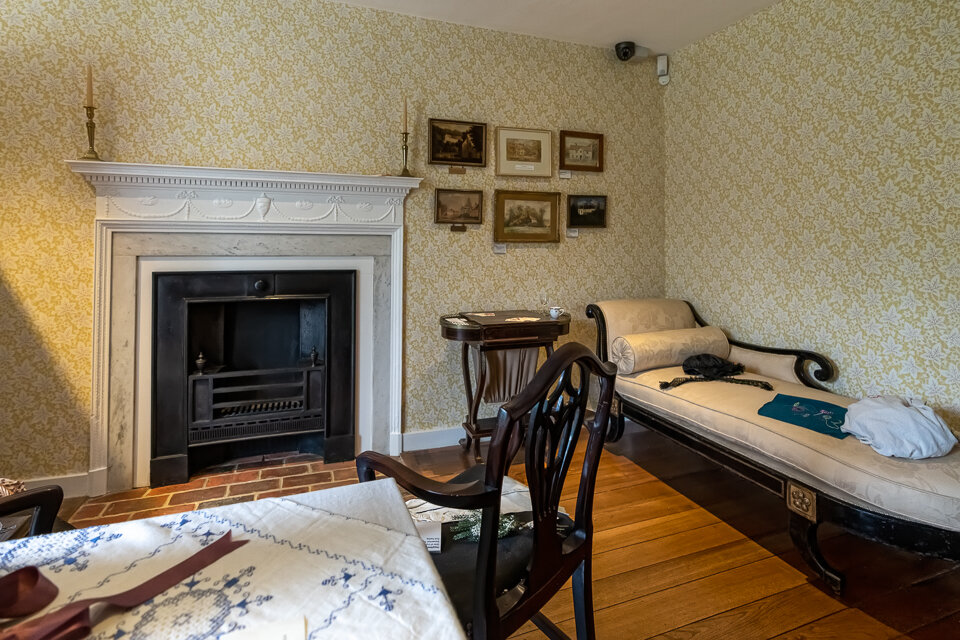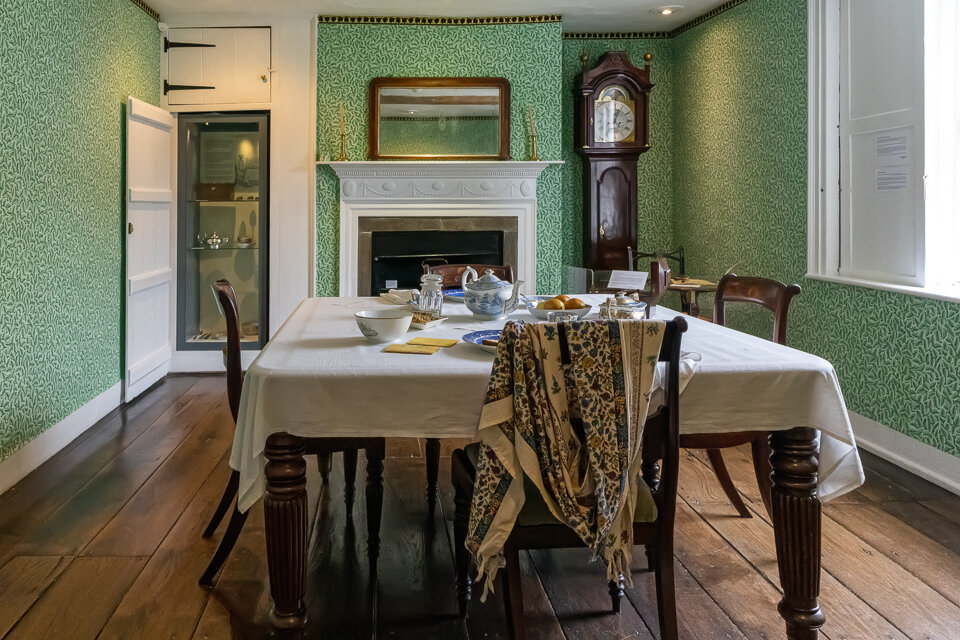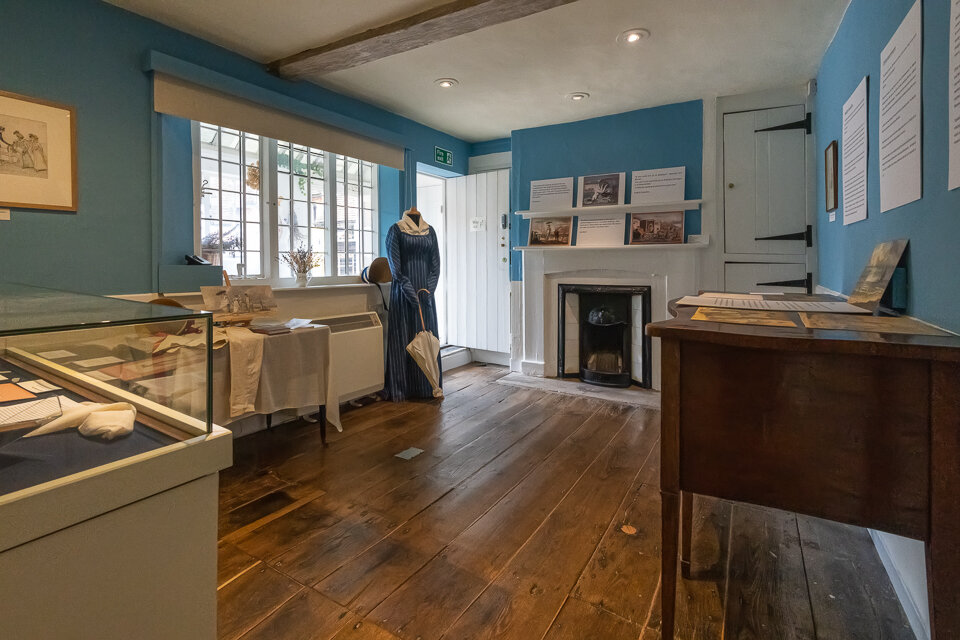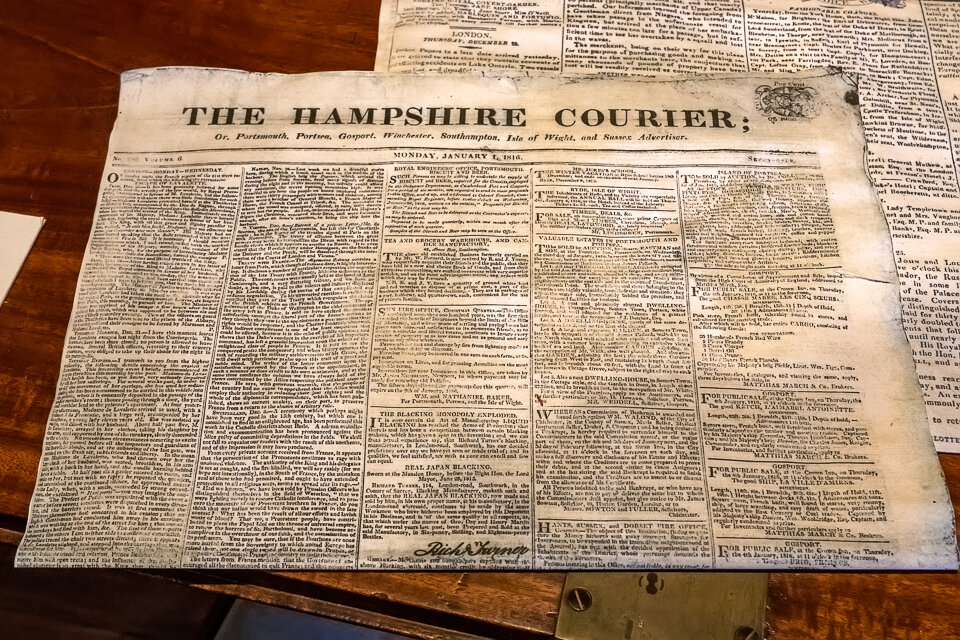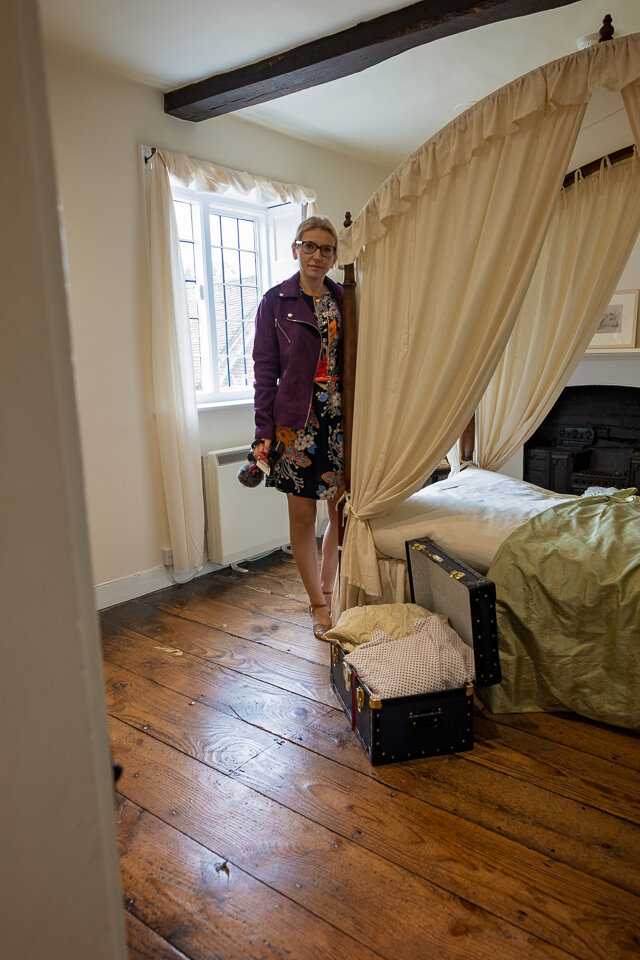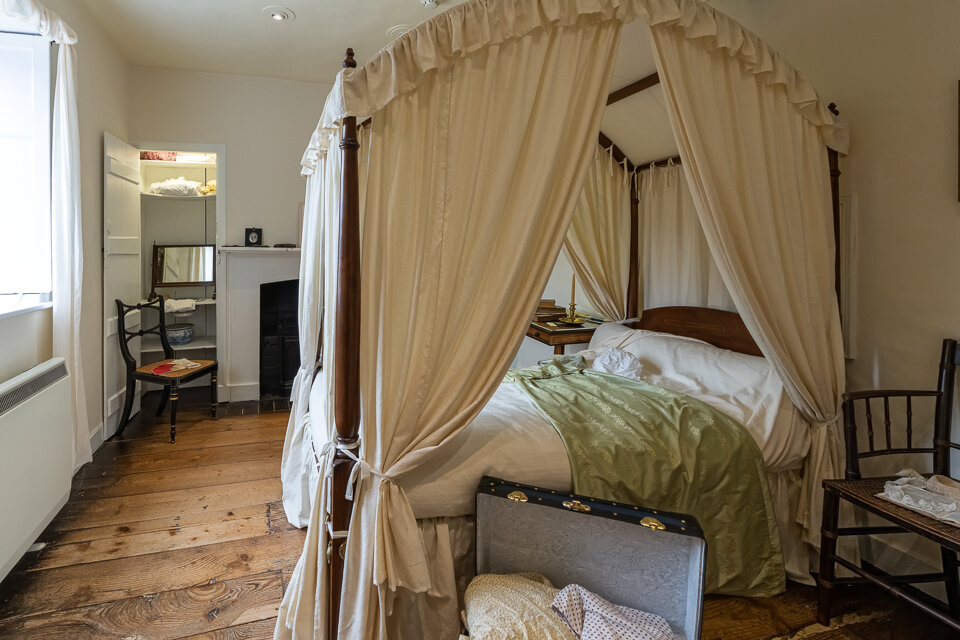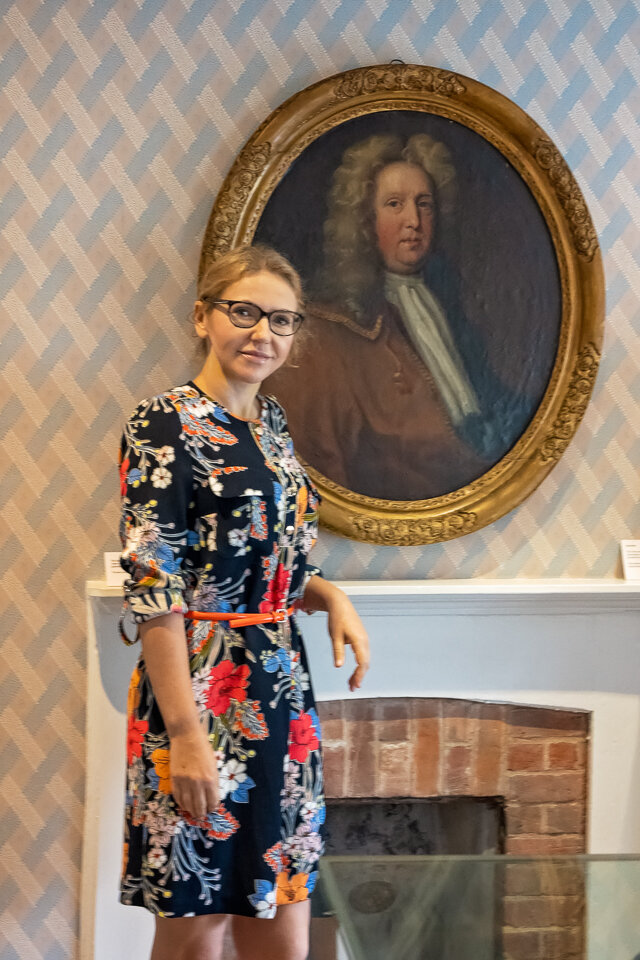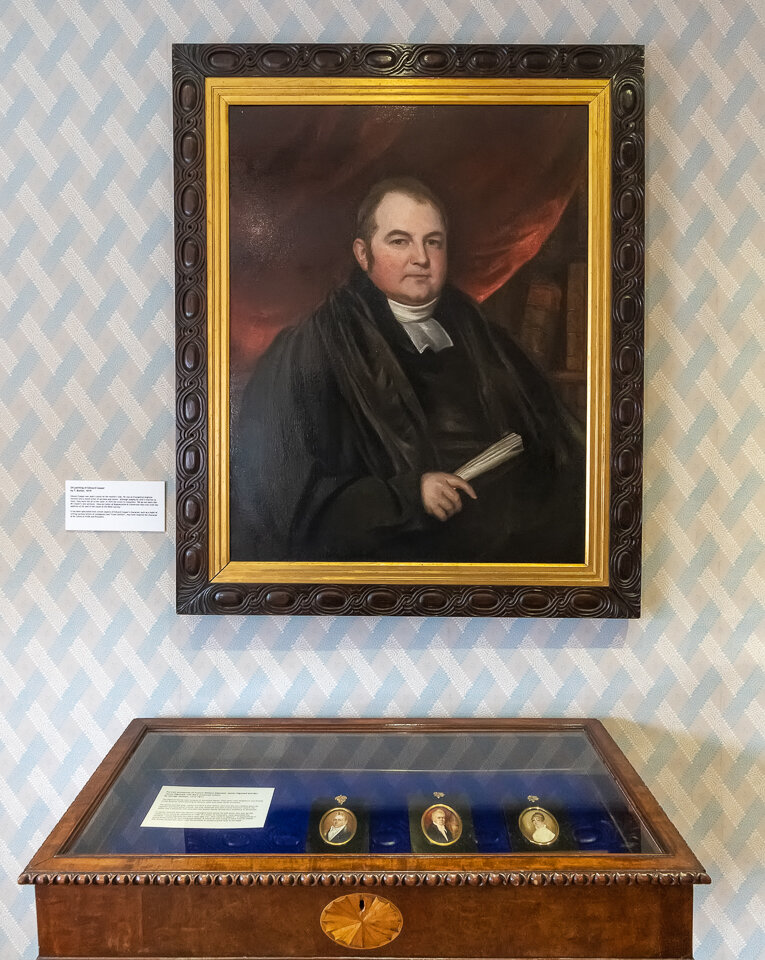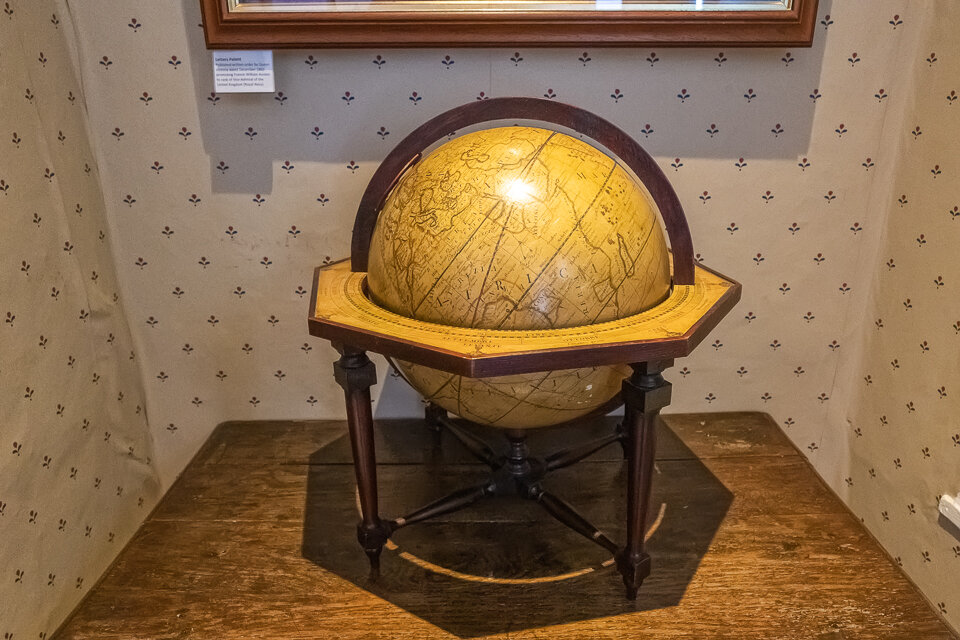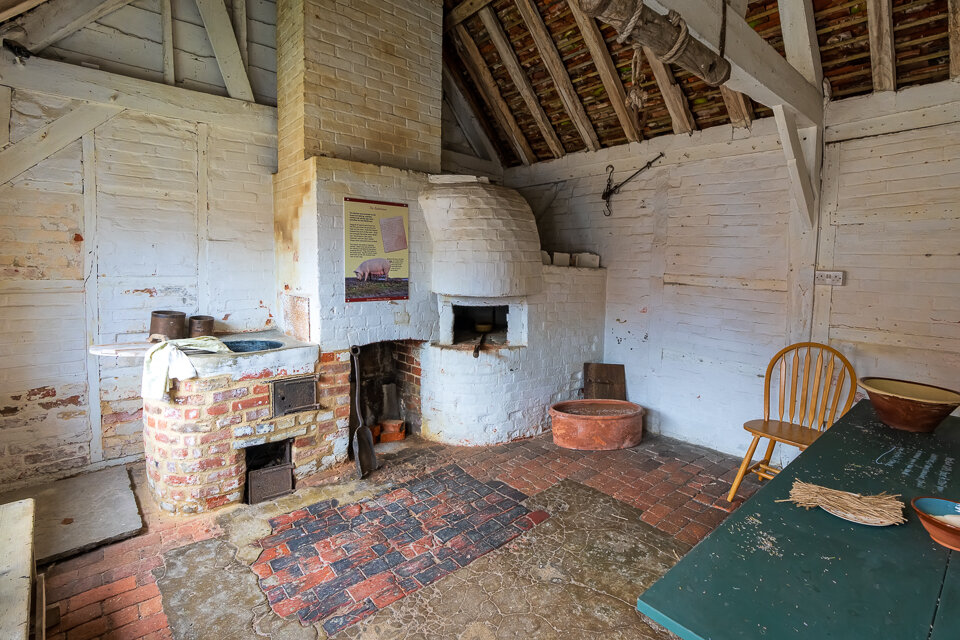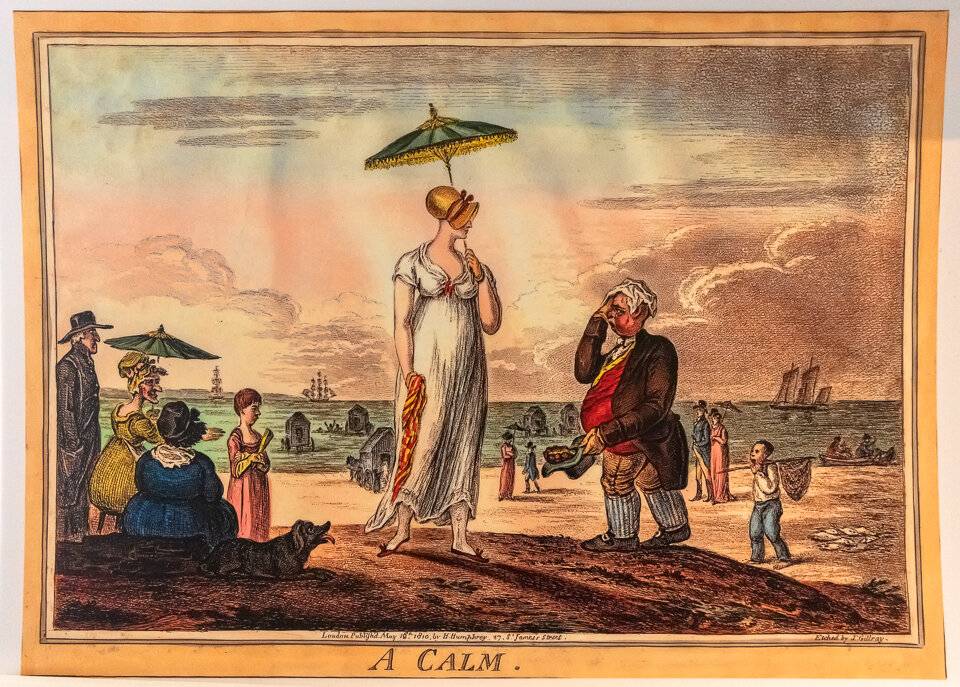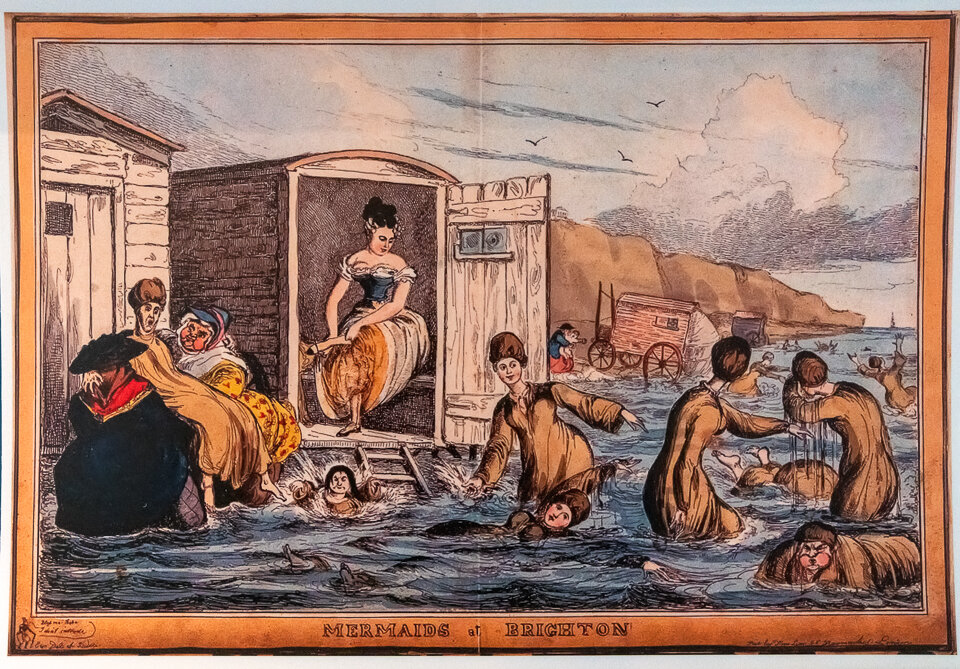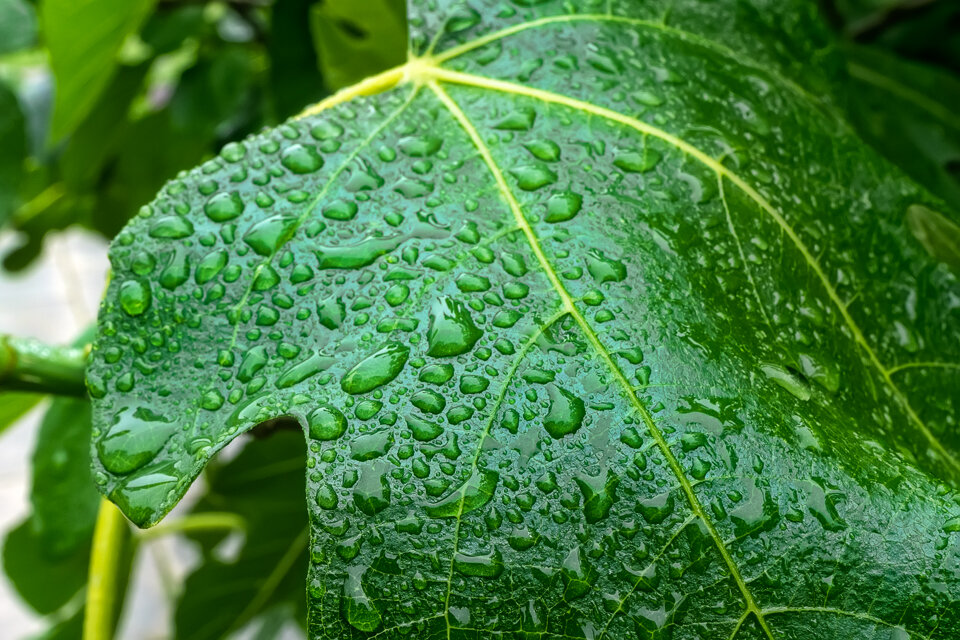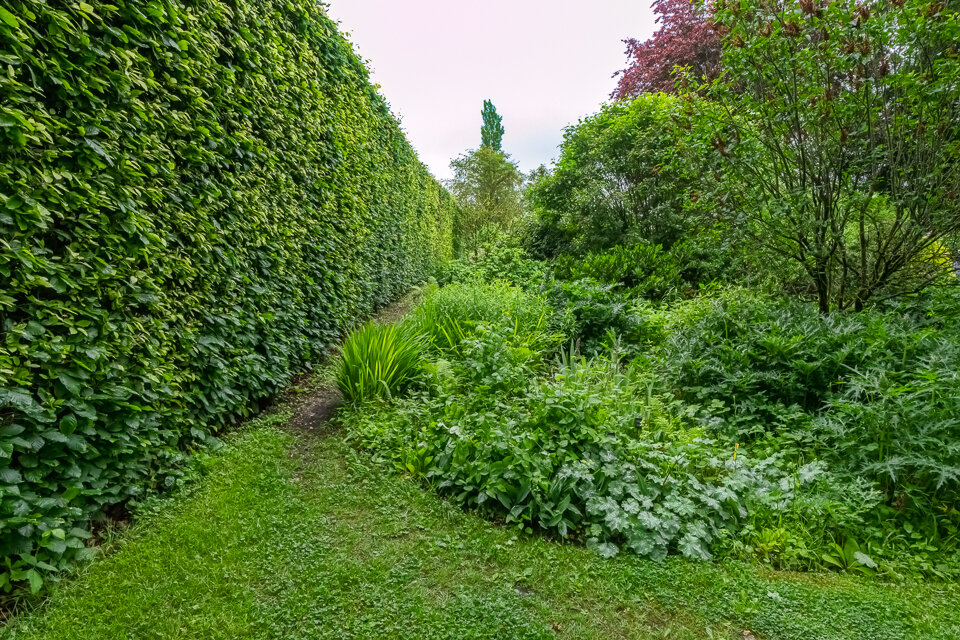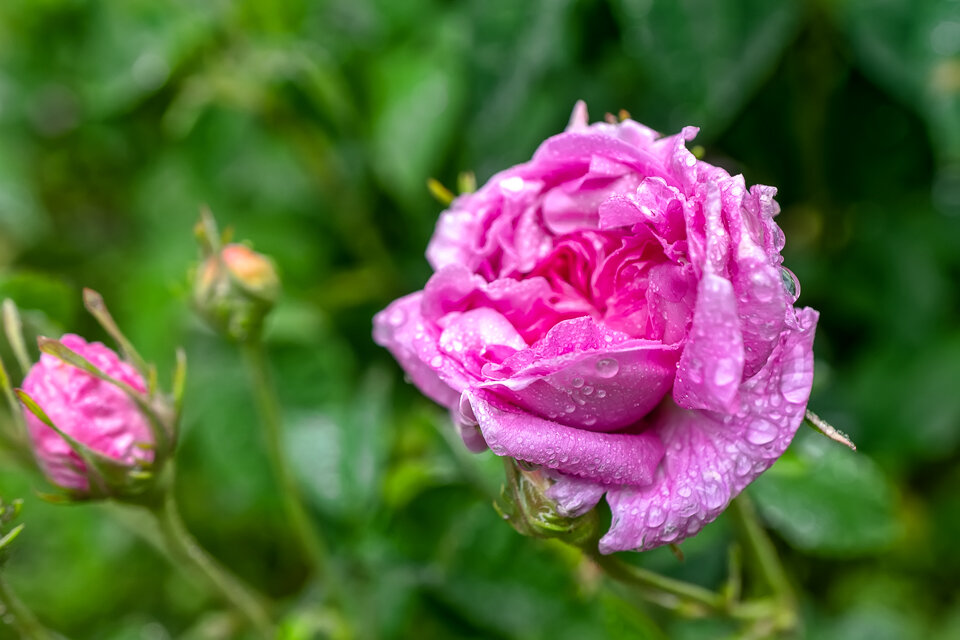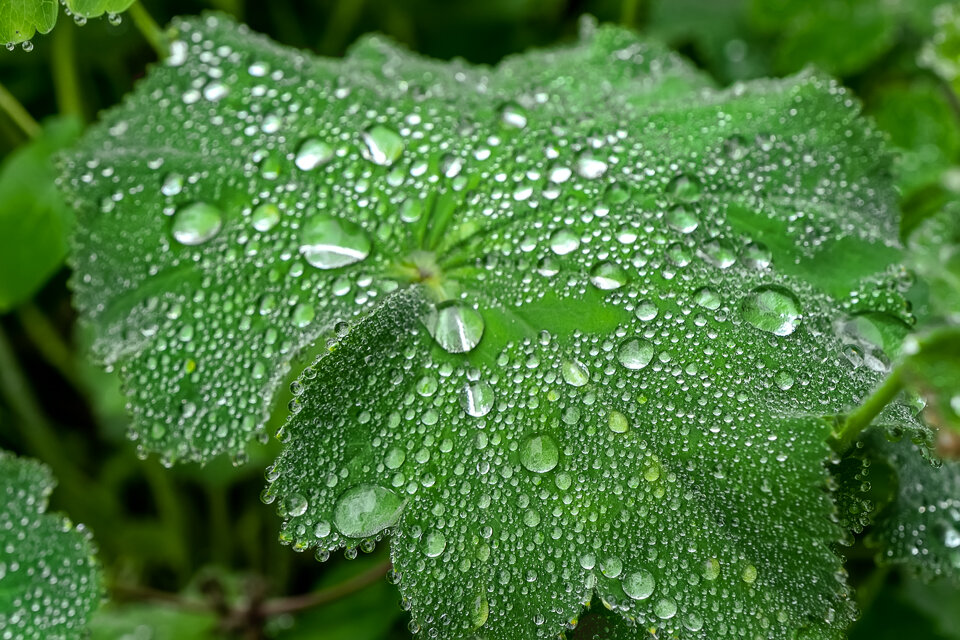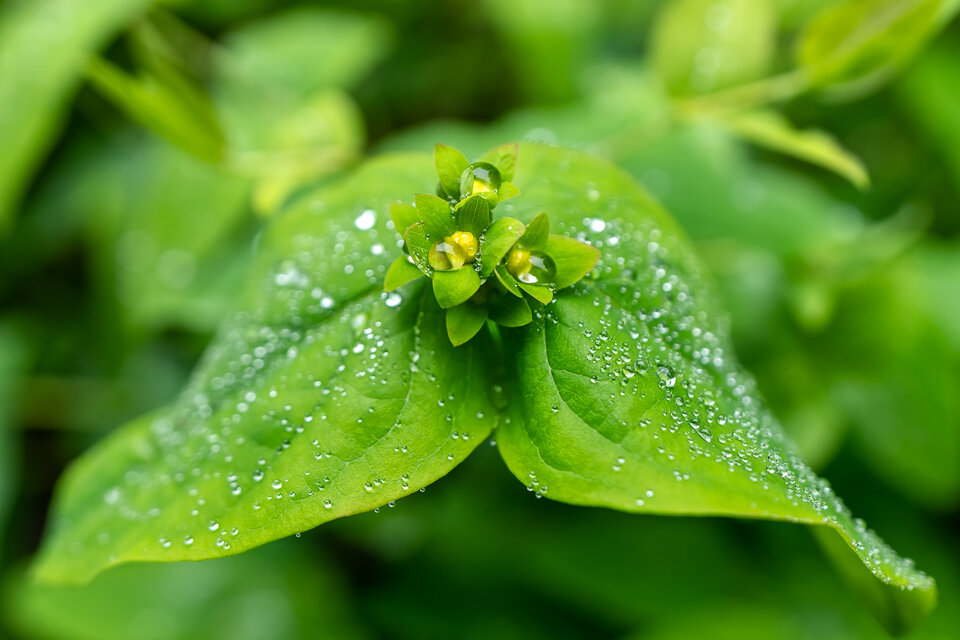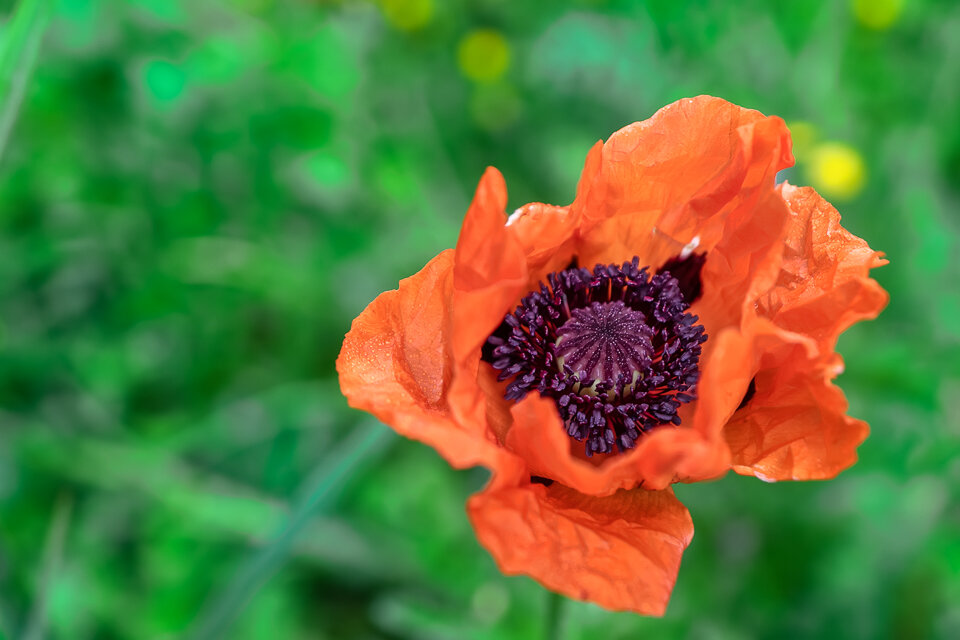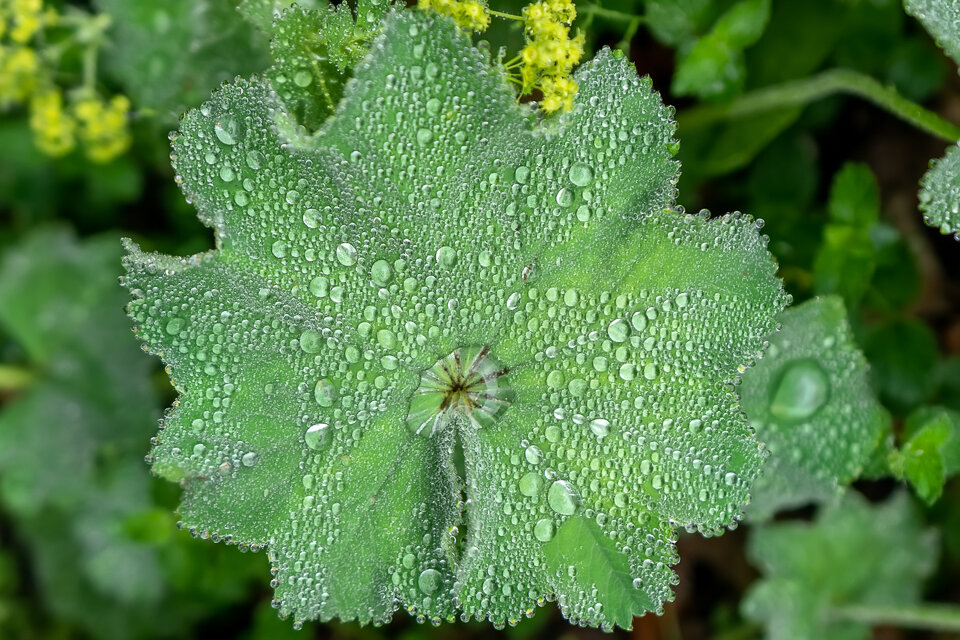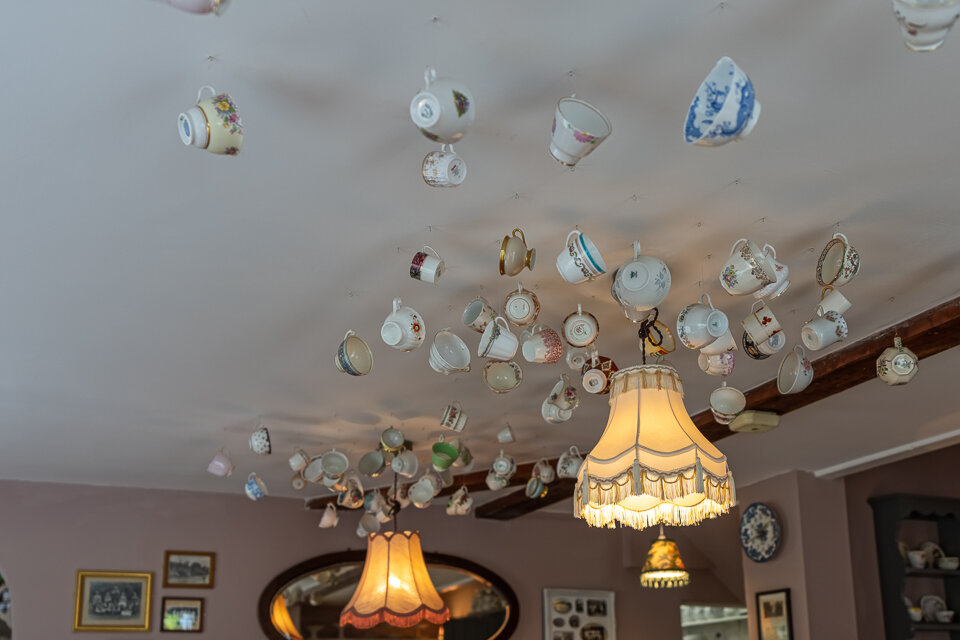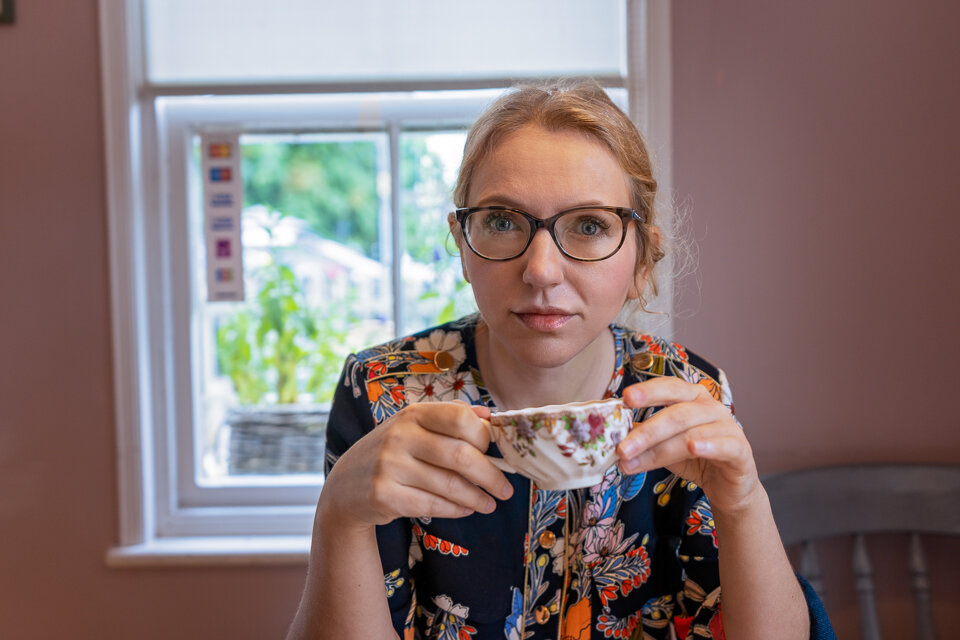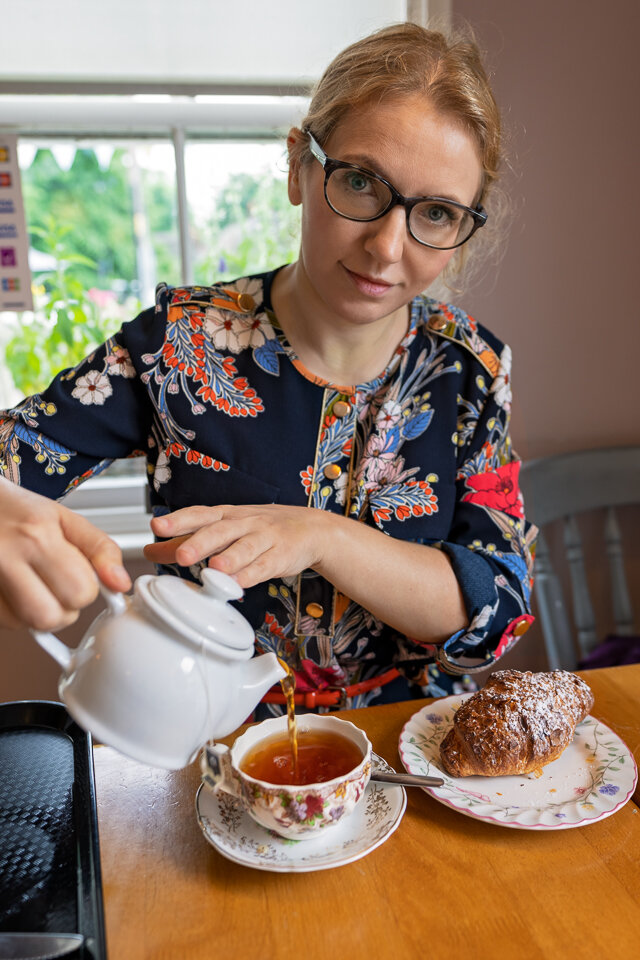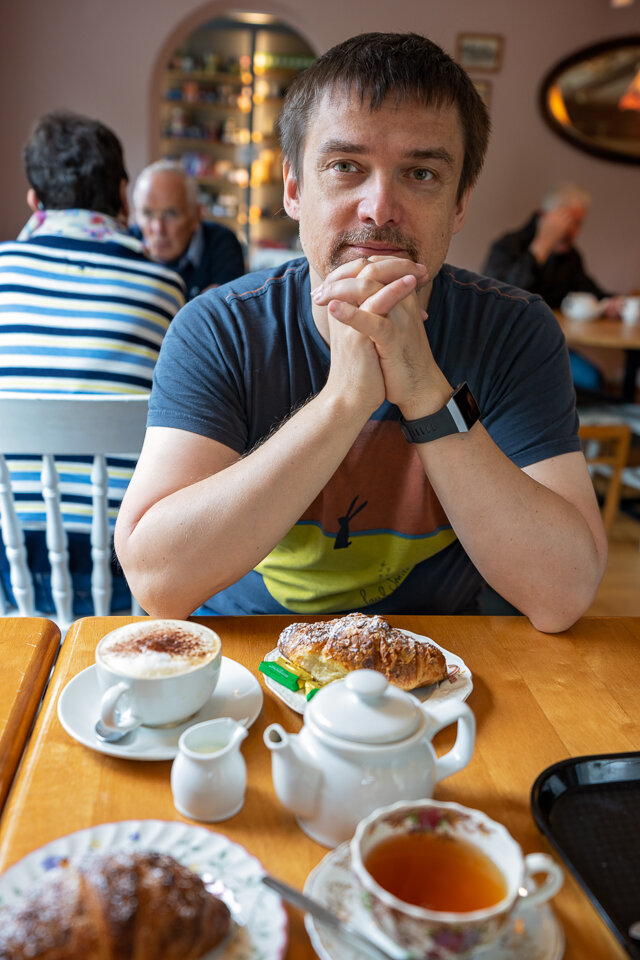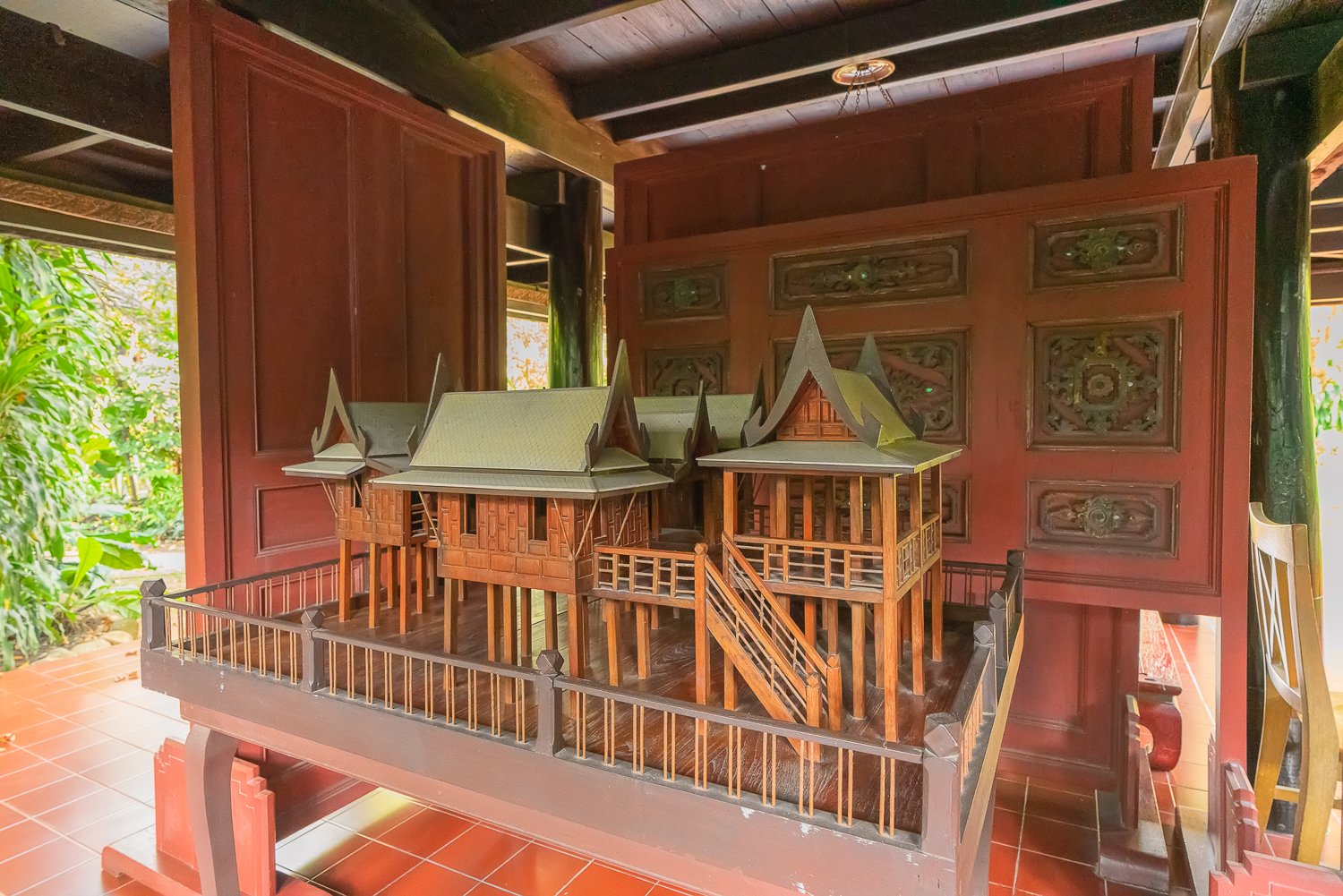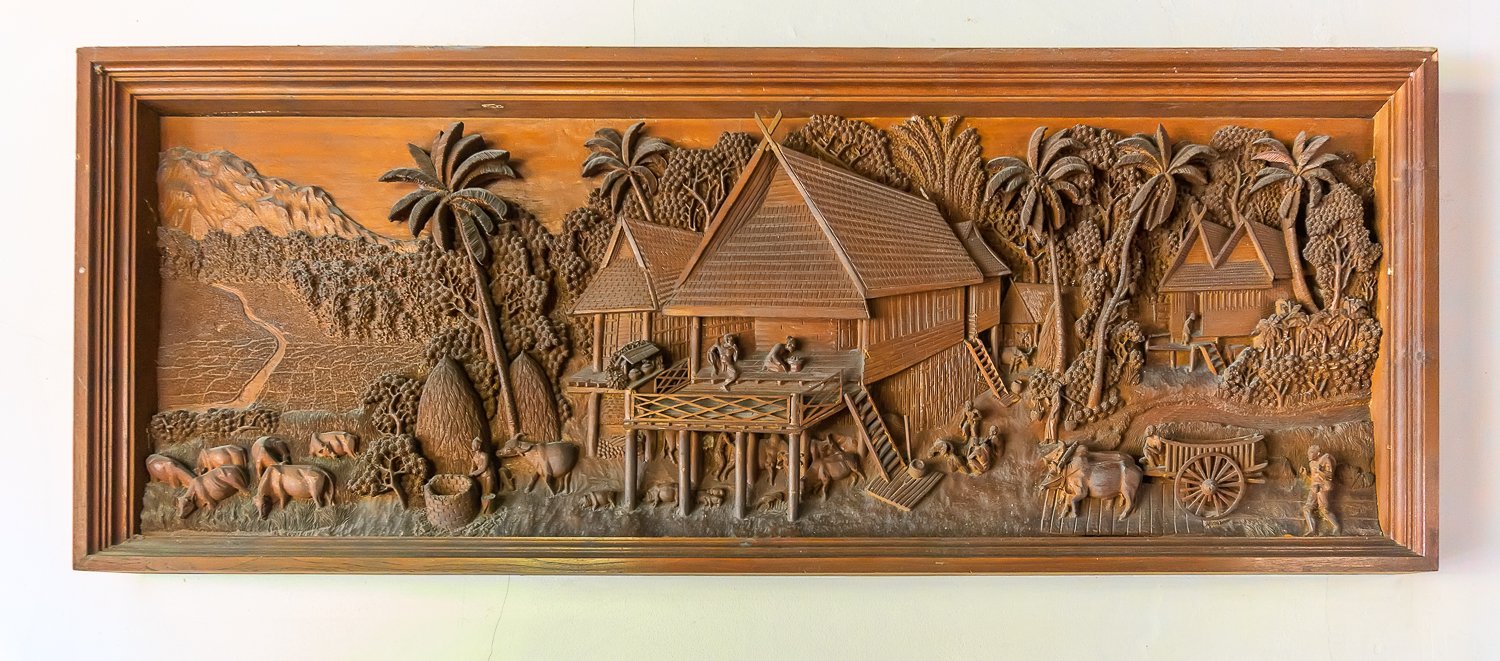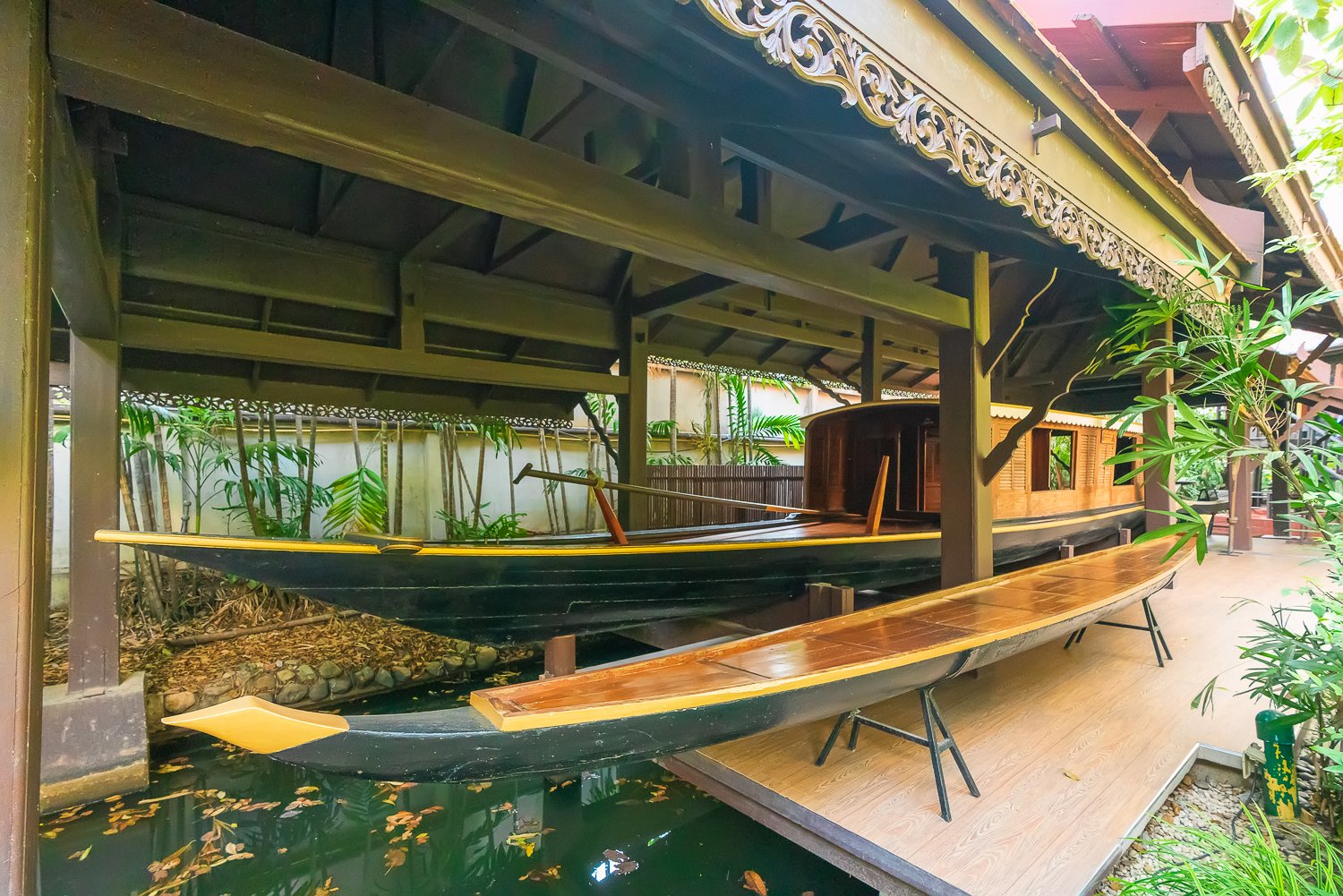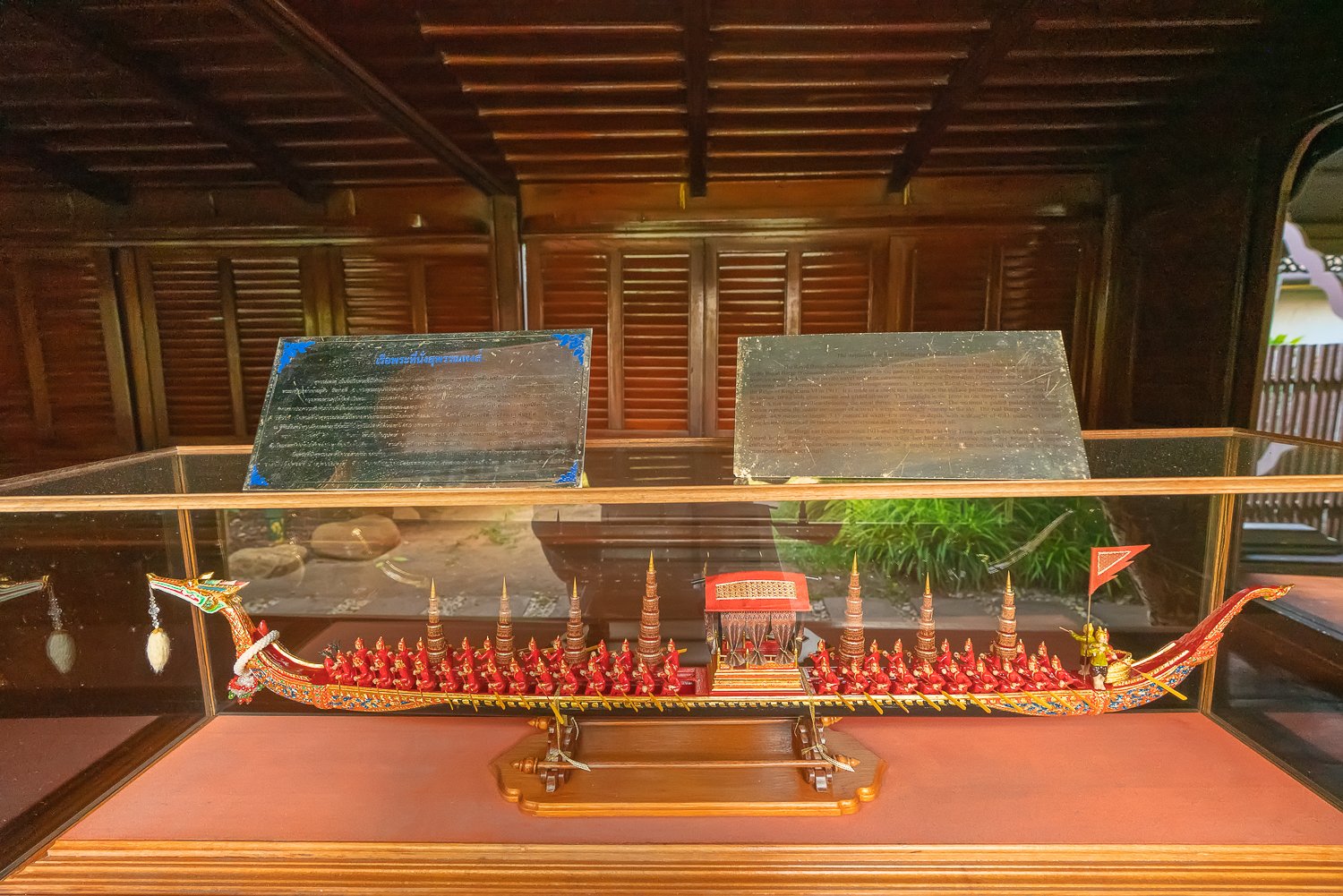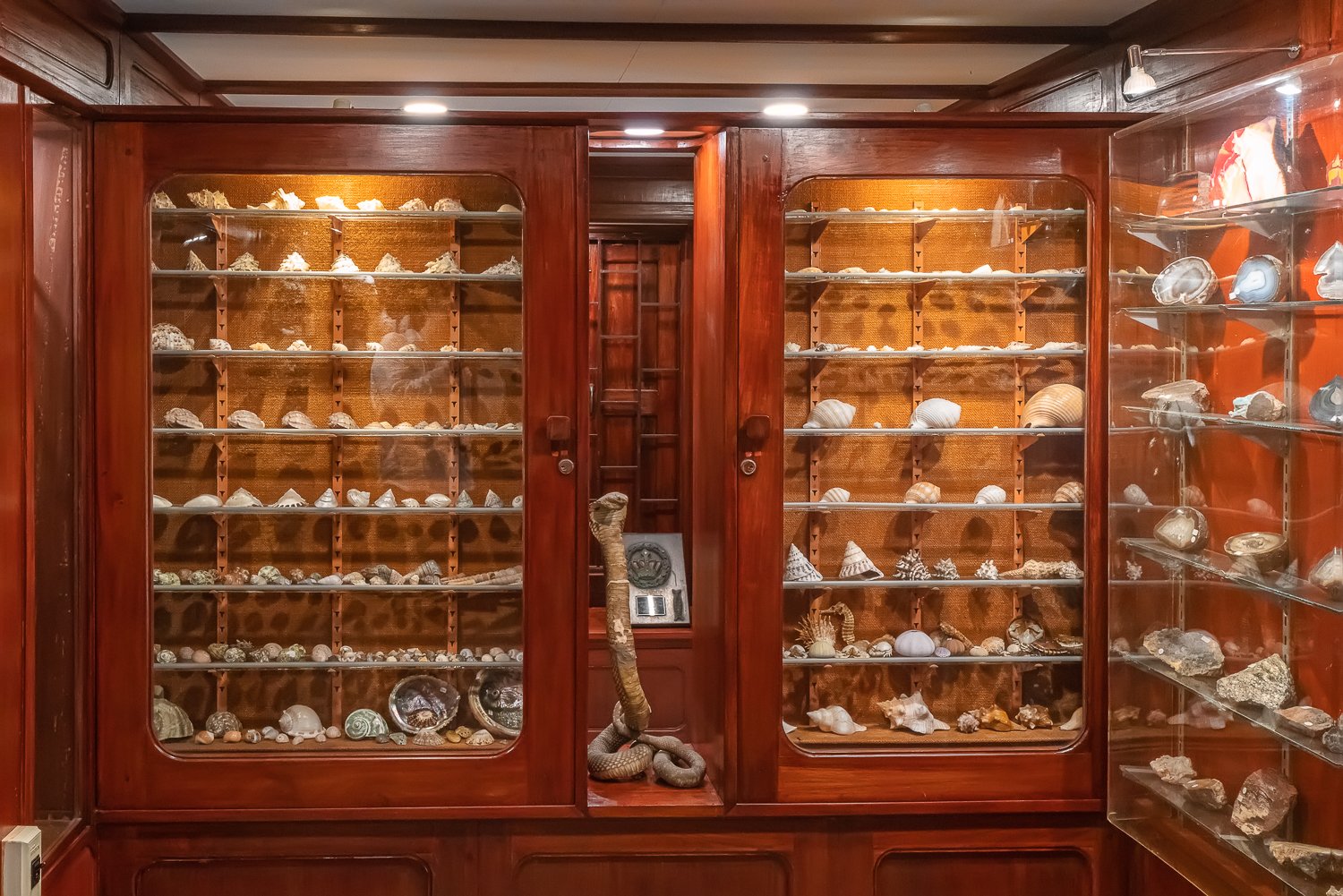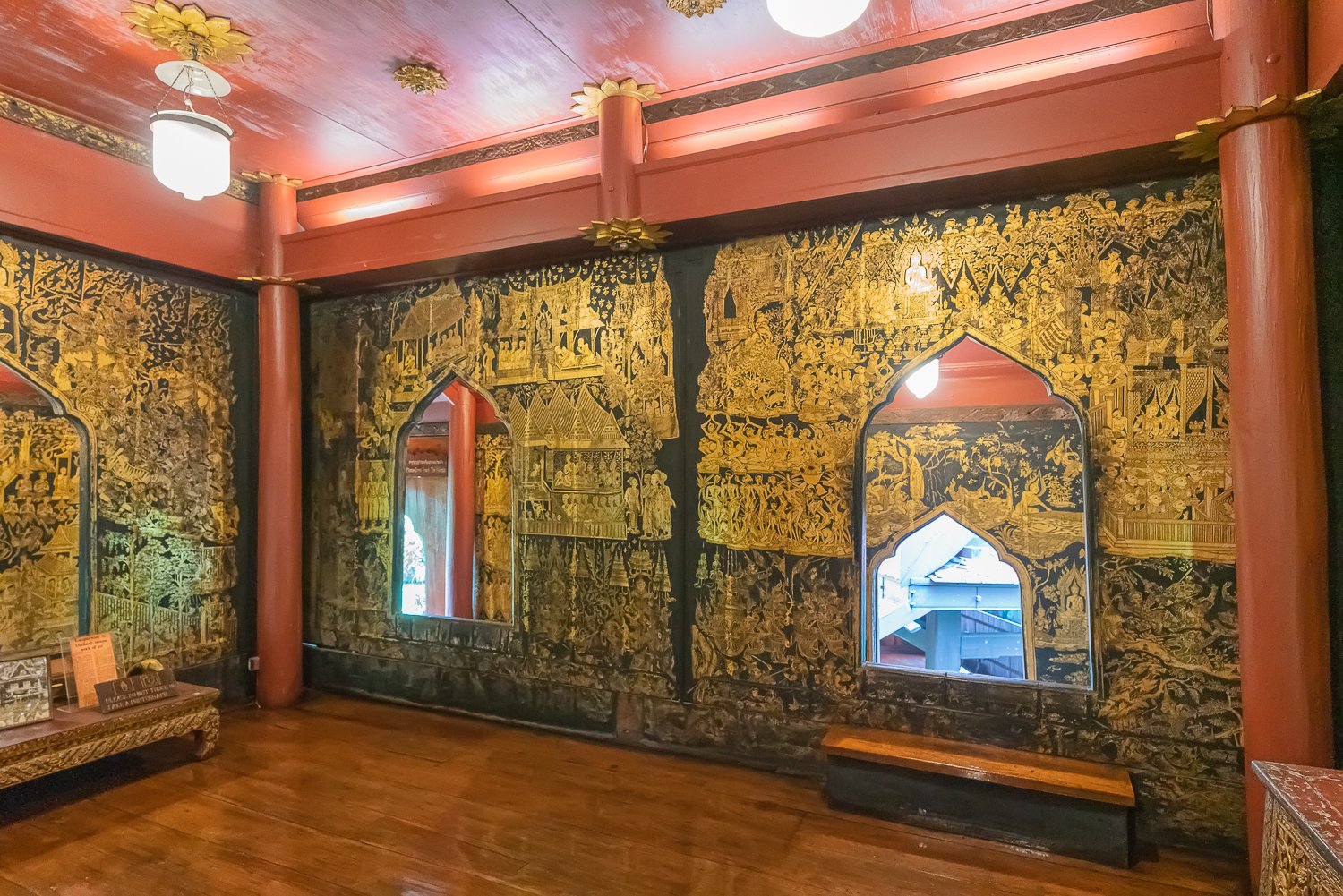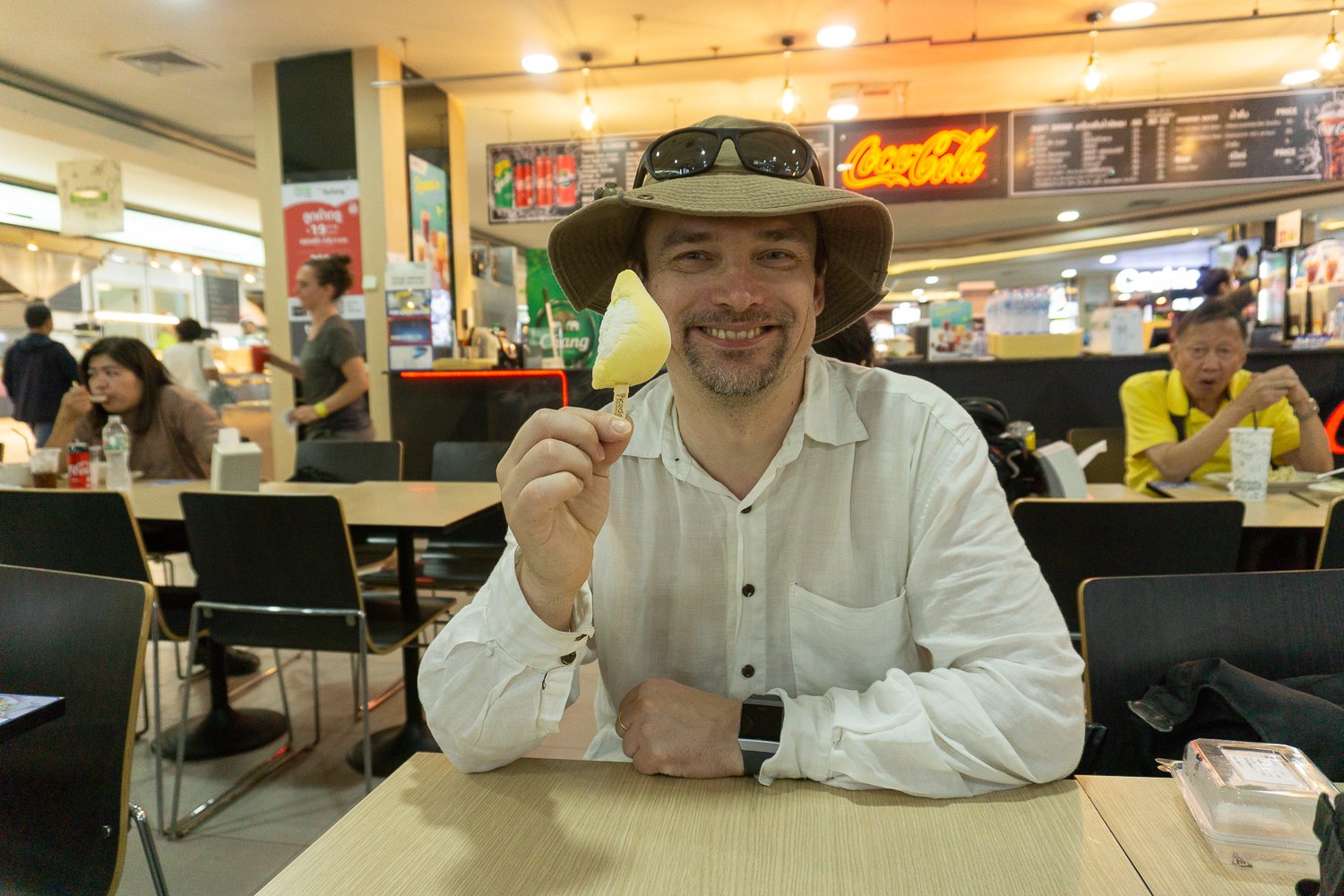There were times when I had to persuade my husband (not yet husband back then) to go with me to a gallery. But he quickly got the bug and now galleries clearly call him. He was very excited to spot we are staying just behind the corner from the Scottish National Portrait Gallery and so we start this day from visiting it. The building itself is quite remarkable (check the video below) made from red sandstone in neogothic style. Figures of poets and monarchs watch down over the street, whilst William Wallace (think Braveheart) and Robert the Bruce (the “Outlaw King” on Netflix may refresh your memory if history of Scotland is not your strong point) flank the entrance.
The Great Hall inside is simply stunning. Along the first floor balustrade you can admire a frieze with procession of Famous Scotts, and there are also huge murals depicting important scenes from the Scottish history.
Dawno, dawno temu musiałam długo namawiać mojego męża (wtedy jeszcze nie męża), żeby poszedł ze mną do galerii. Ale szybko złapał bakcyla i teraz galerie wyraźnie same do niego wołają. Az wiec podskoczył z radości, odkrywając, ze nasz hotel znajduje się dosłownie za rogiem Szkockiej Narodowej Galerii Portretów. Dzisiejszy dzień zaczynamy właśnie od tej galerii. Sam budynek już robi wrażenie (patrz wideo poniżej) - wykonany z czerwonego piaskowca w stylu neogotyckim, z wielkimi postaciami poetów i monarchów obserwujących ulicę poniżej, podczas gdy William Wallace (pomyśl o „Braveheart”) i Robert the Bruce („Król wyjęty spod prawa” na Netflix może odświeżyć waszą pamięć, jeśli historia Szkocji zaciera się w pamięci) pełnią straż przy wejściu.
Wielka Sala w środku jest jeszcze bardziej impoujaca. Wzdłuż balustrady pierwszego piętra można podziwiać fryz z procesją sławnych Szkotów, uwagę przyciagaja także ogromne malowidła ścienne przedstawiające ważne sceny z historii Szkocji.
From here we go up to the exhibition rooms and admire the huge collection of portraits. The temporary exhibitions are much less impressive in our (subjective of course) opinions. Alison Watt’s “A Portrait Beyond Likeness” is not half as exciting as I expected reading the concept description of this project and Thomas Joshua Cooper’s “The World's Edge” makes me think “the king is naked”. These are just random (B&W of course because you know, it is ART) pictures of various places with composition and light questionable at best. I am sorry, but I am not going to lie, pictures like these I would have deleted from my camera card. But this is not so important after all, because the portrait exhibitions are wonderful and we enjoy our visit a lot.
Stąd idziemy w górę do sal wystawowych i podziwiamy ogromną kolekcję portretów. W naszych (oczywiście subiektywnych) opiniach znacznie mniej imponujące są wystawy tymczasowe. „A Portrait Beyond Likeness” Alison Watt nie jest w połowie tak ekscytujący, jak się spodziewałem, czytając opis koncepcji tego projektu, a „The World's Edge” Thomasa Joshuy Coopera sprawia, że myślę „król jest nagi”. Są to po prostu przypadkowe (czarno-białe oczywiście, bo w końcu to jest SZTUKA) zdjęcia różnych miejsc, których kompozycja i światło są co najwyżej wątpliwe. Przykro mi, ale nie będę kłamać, takie zdjęcia usunęłabym z karty własnego aparatu. Ale to wszystko nie jest takie ważne, bo główne wystawy portretowe są fantastyczne i wizytę tutaj uznajemy za bardzo udaną.
We also, surprise, surprise, did not skip the café. They serve delicious cakes and nice lunch meals. First point of the day ticked off and now we are off to the Charlotte’s square.
Rzecz jasna nie pominęliśmy także kawiarni. Serwują tu pyszne ciasta i smaczne lekkie dania na lunch. I tak nam minął ranek, a teraz ruszamy jeszcze na plac Charlotty.

